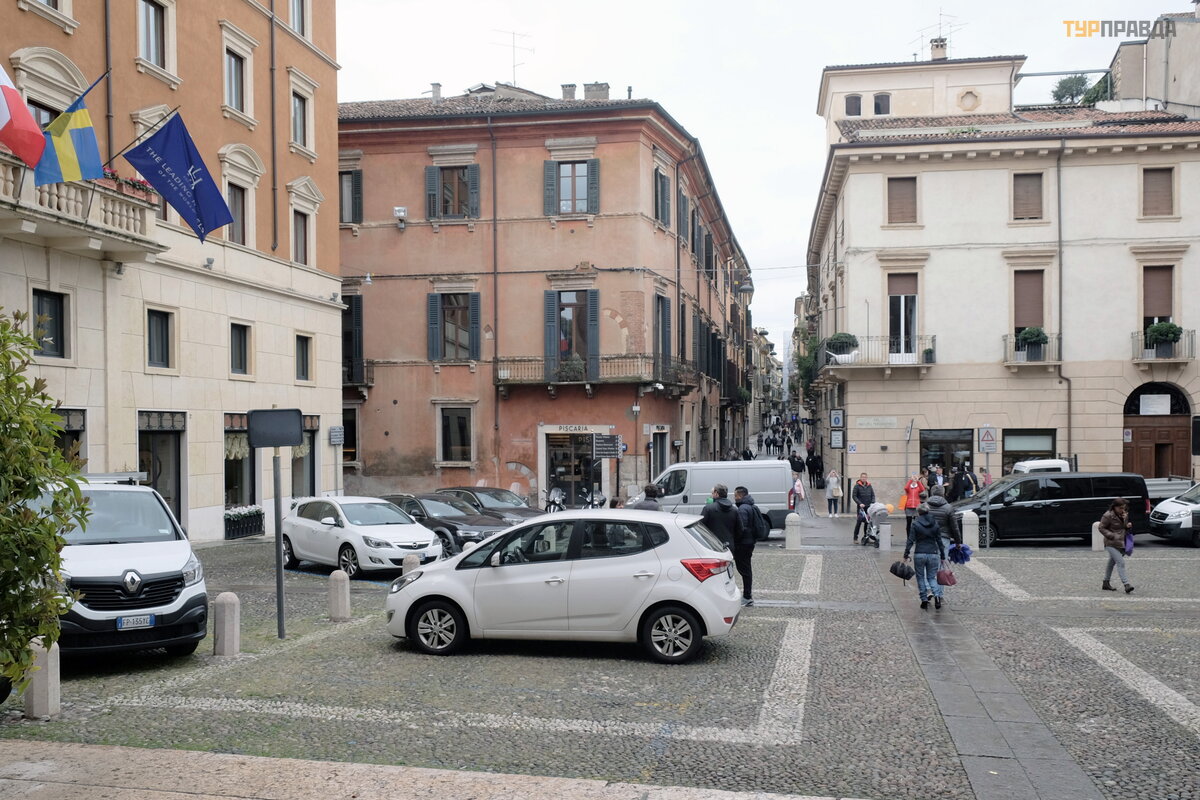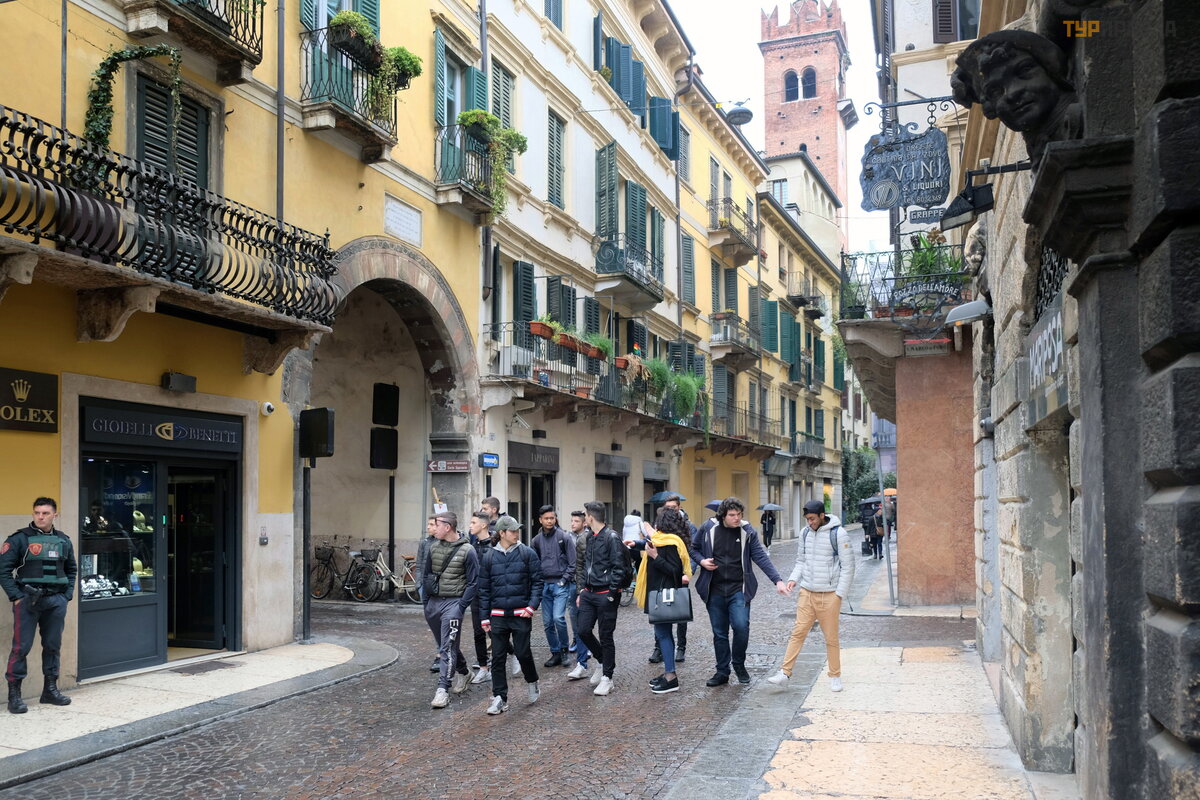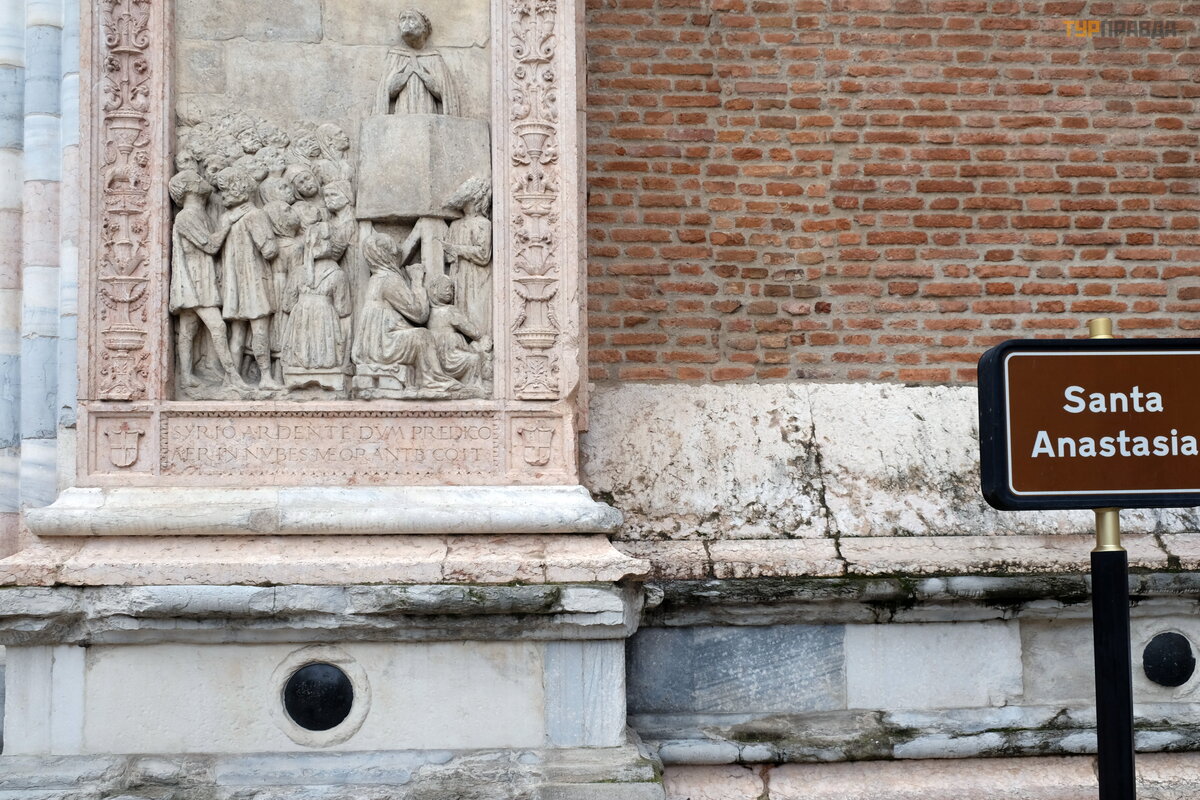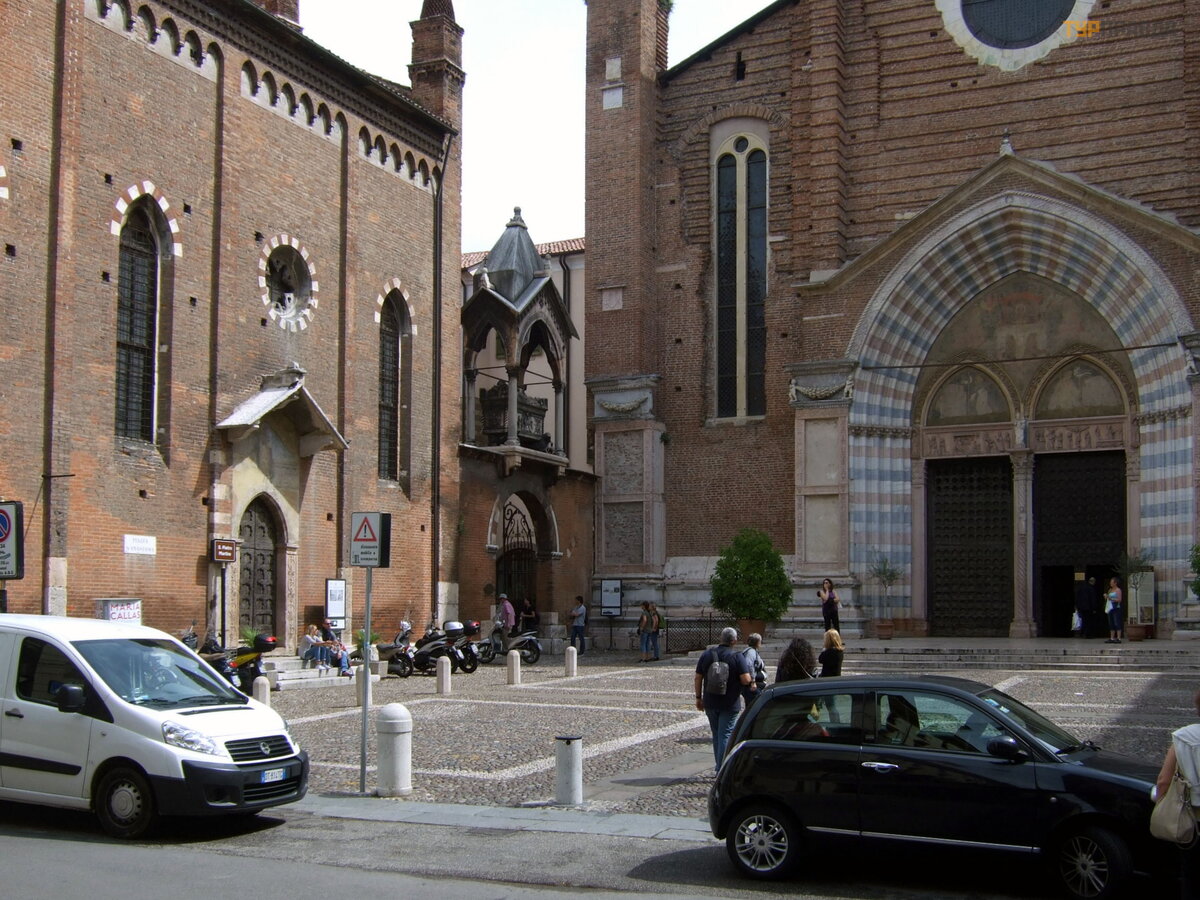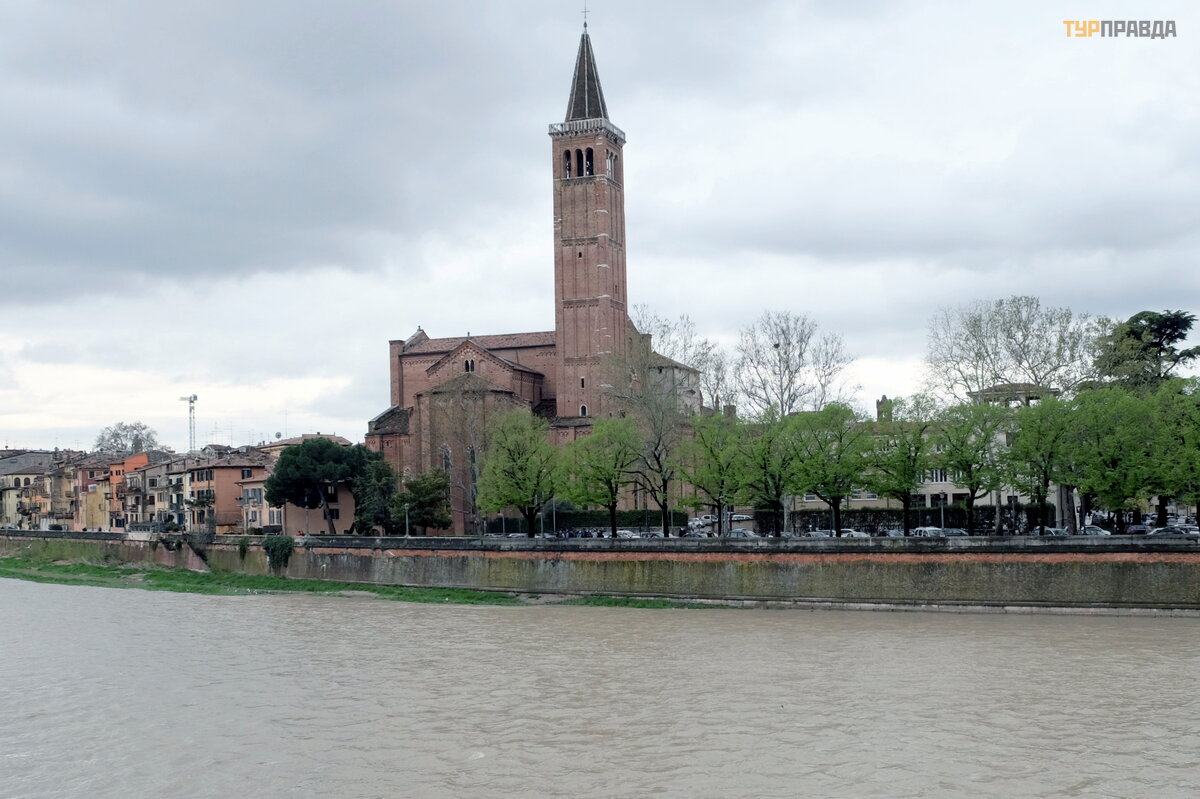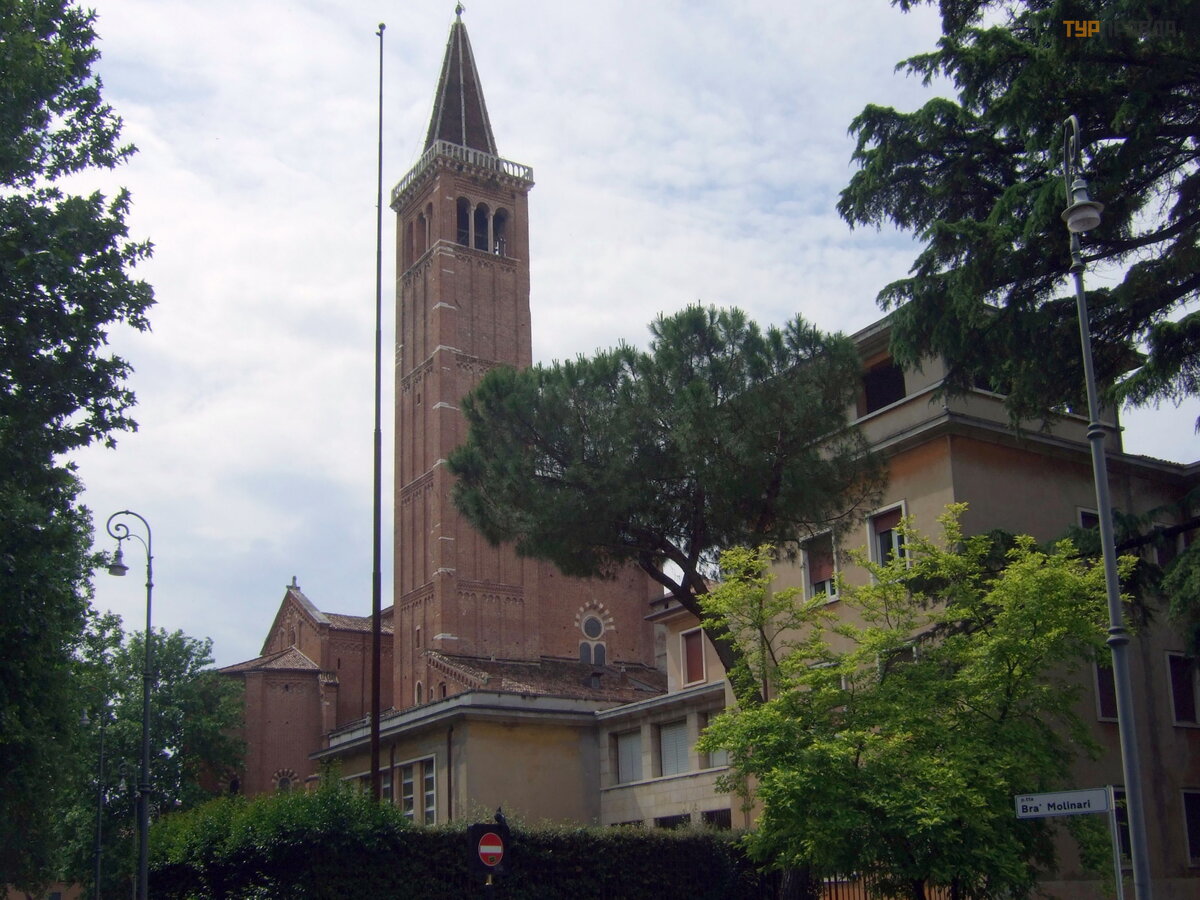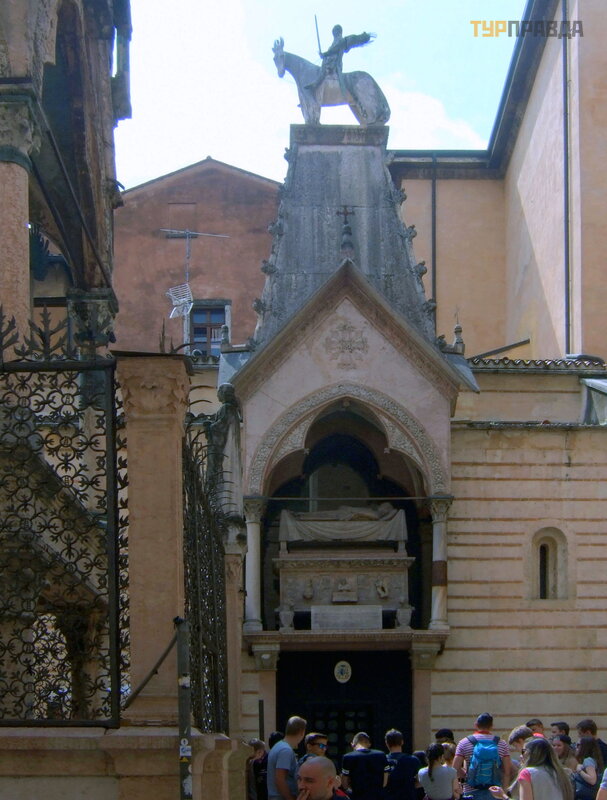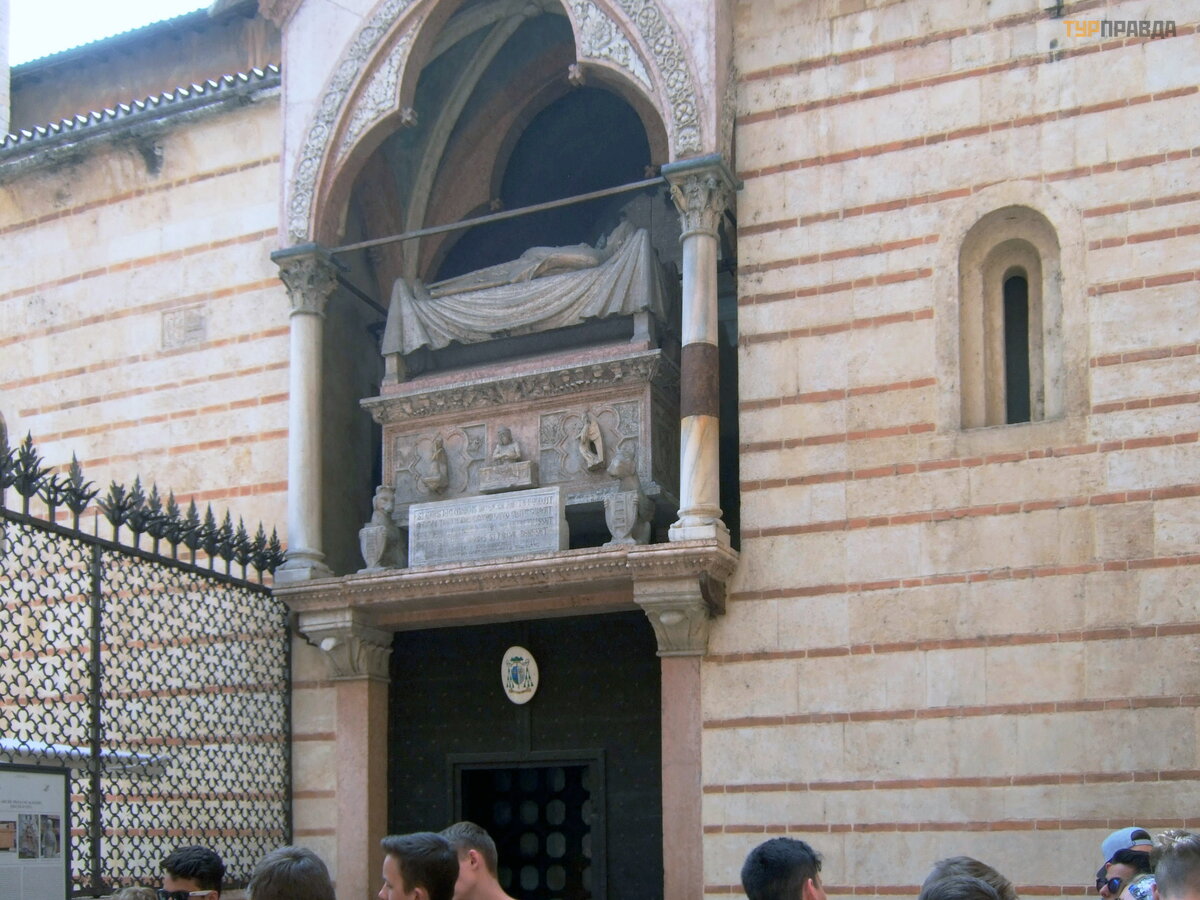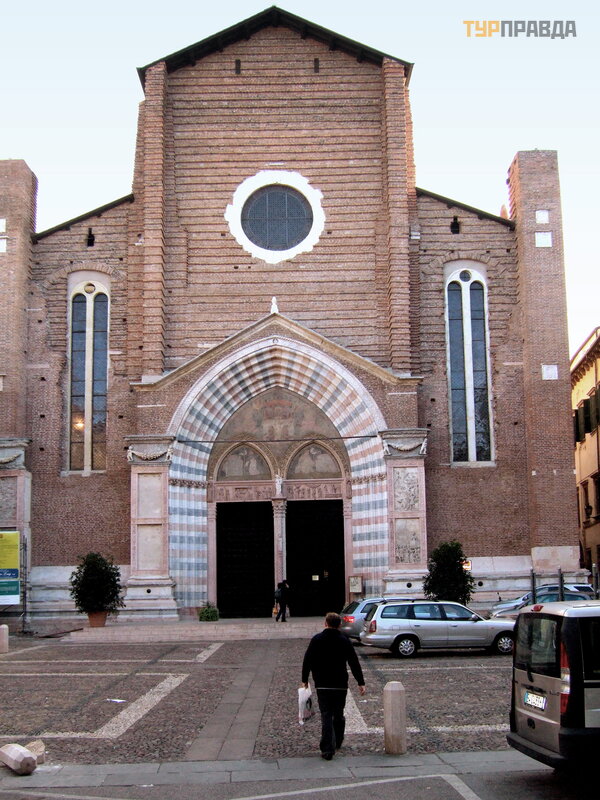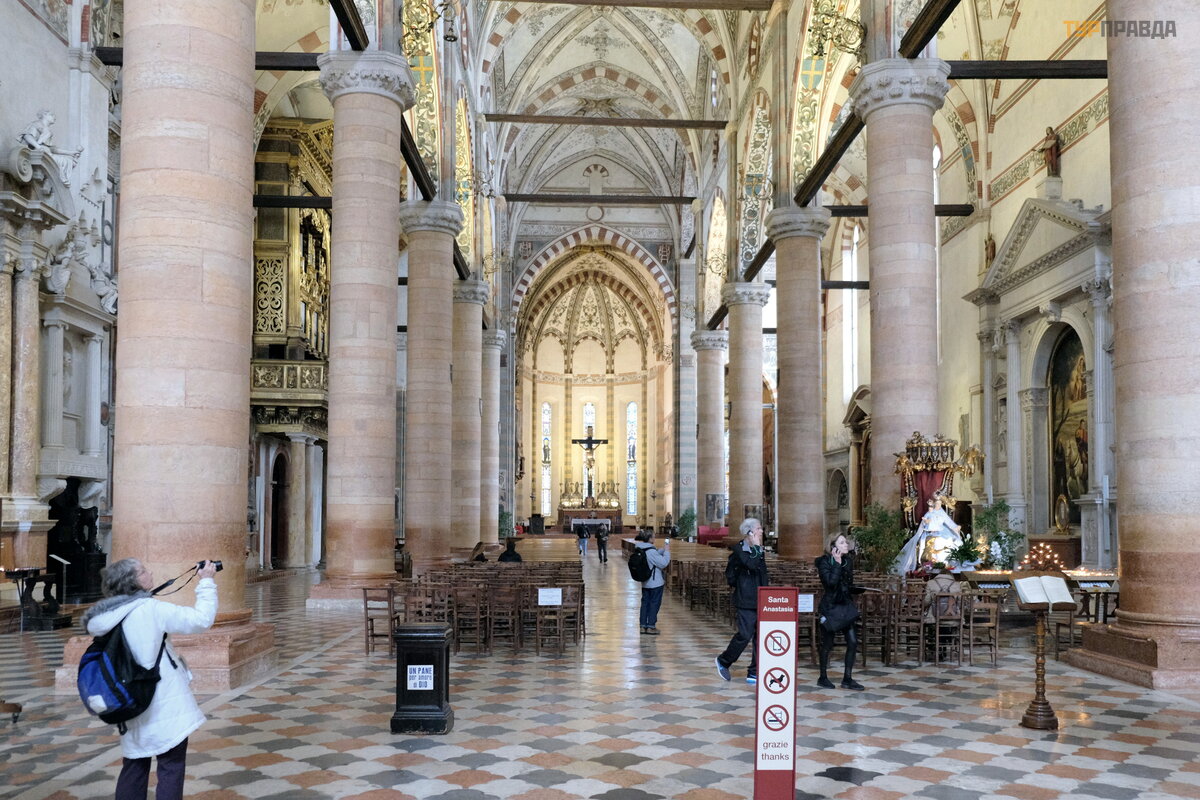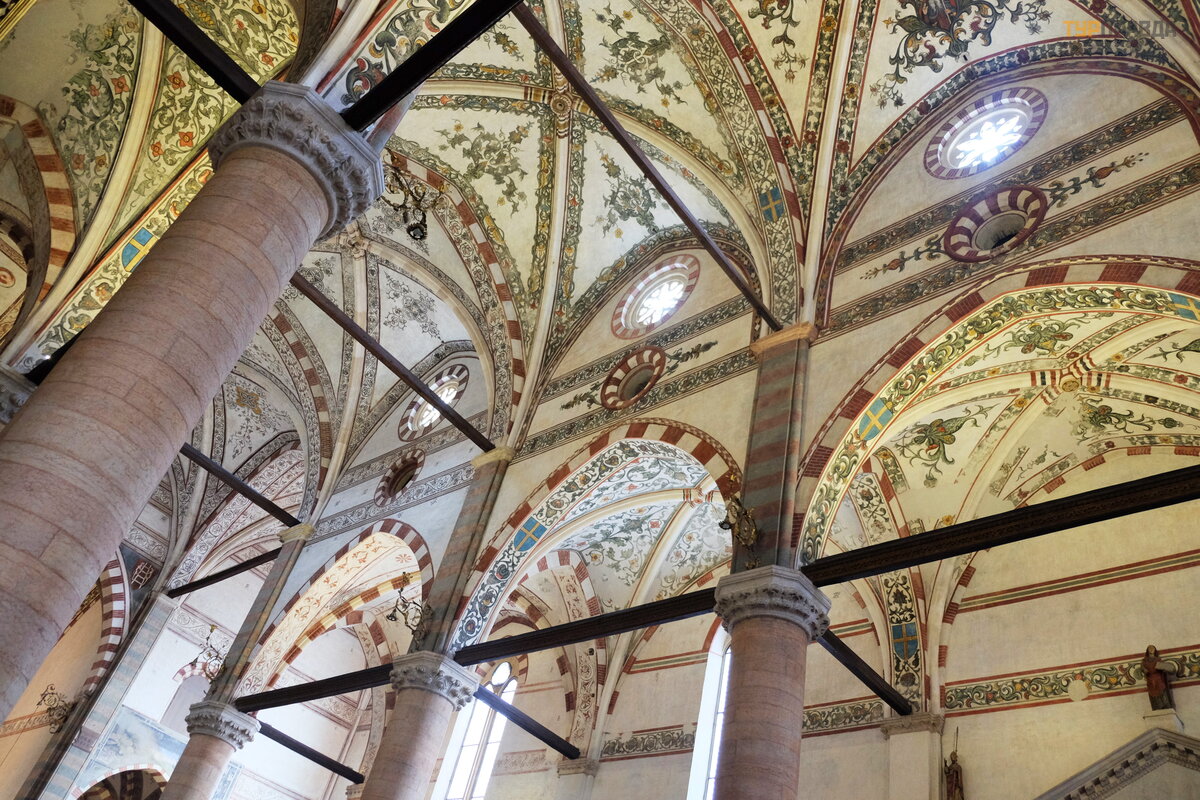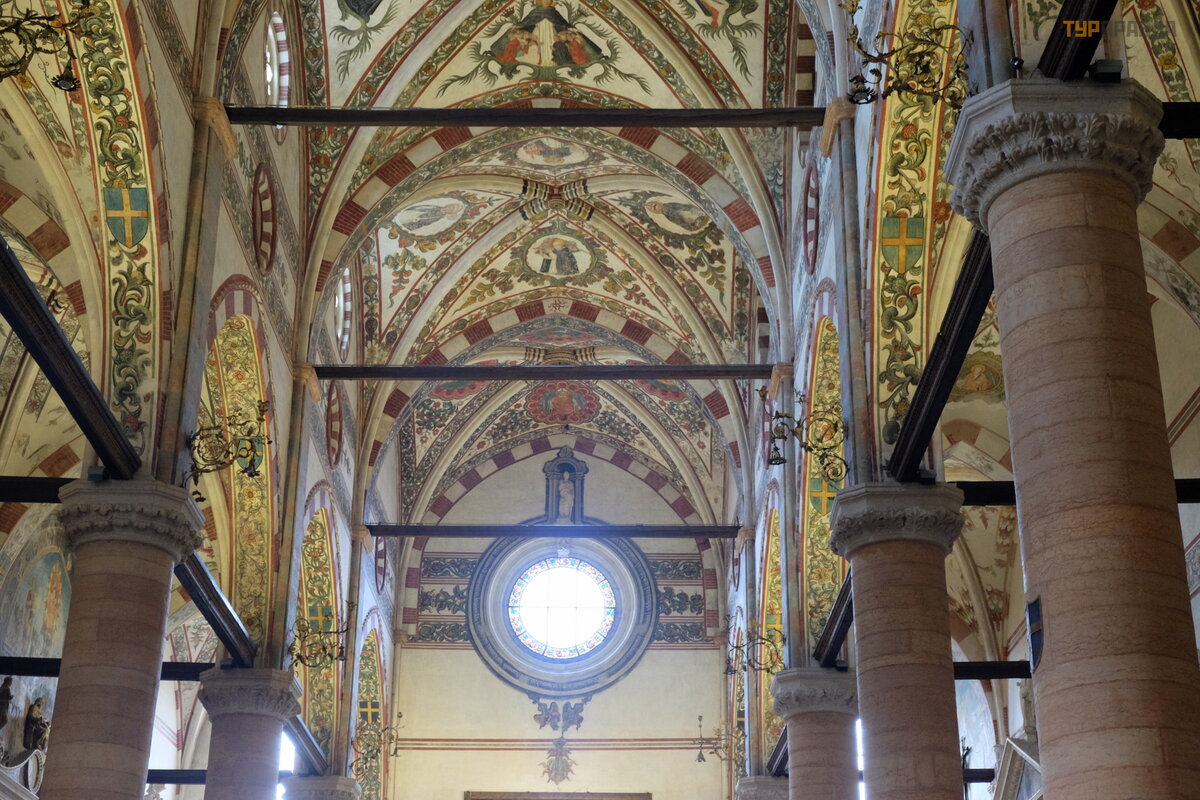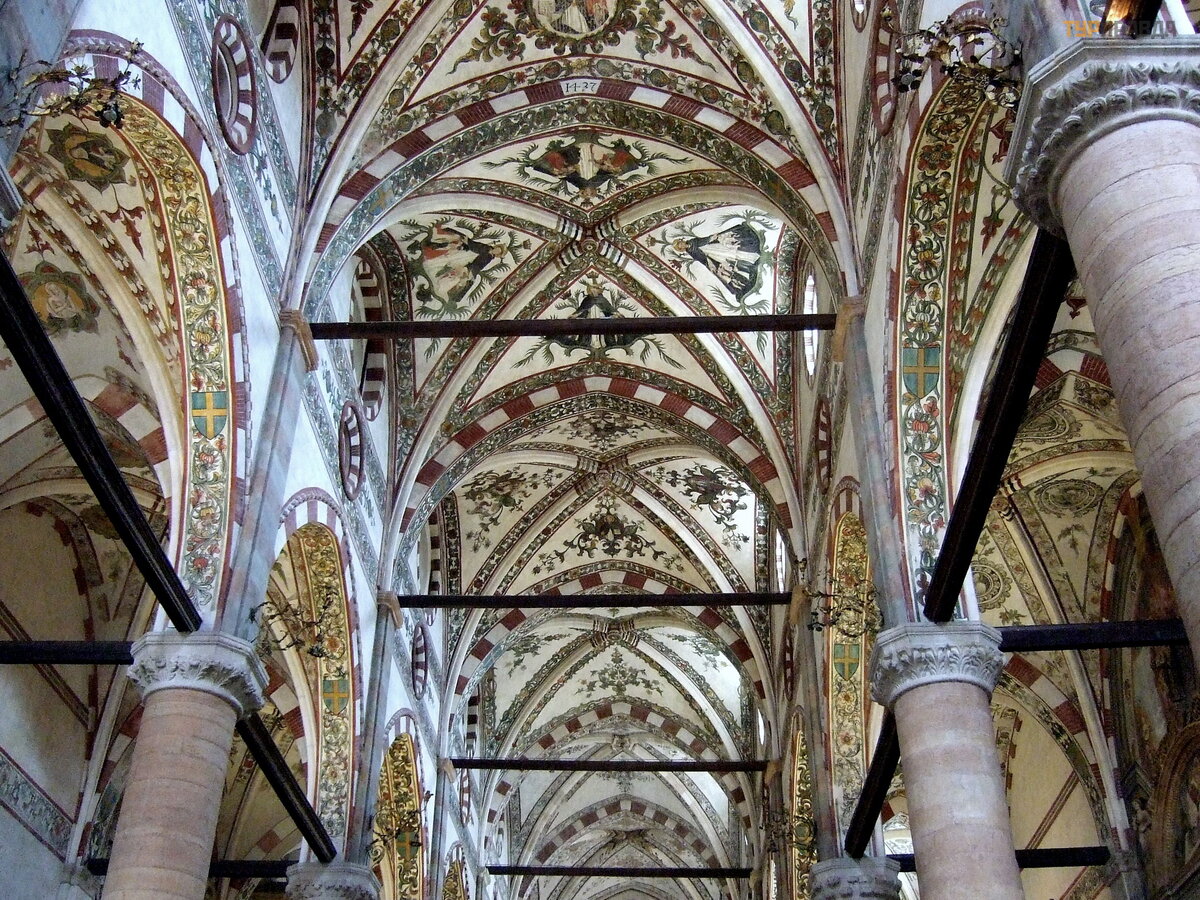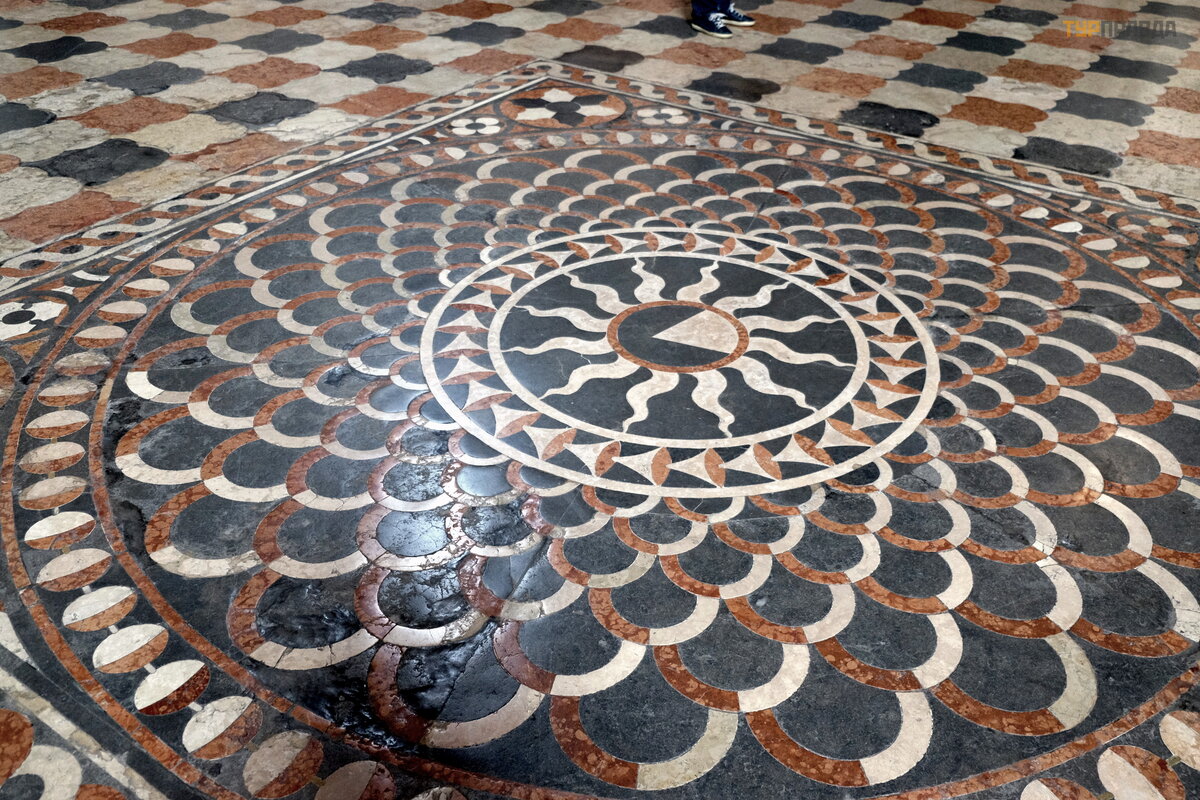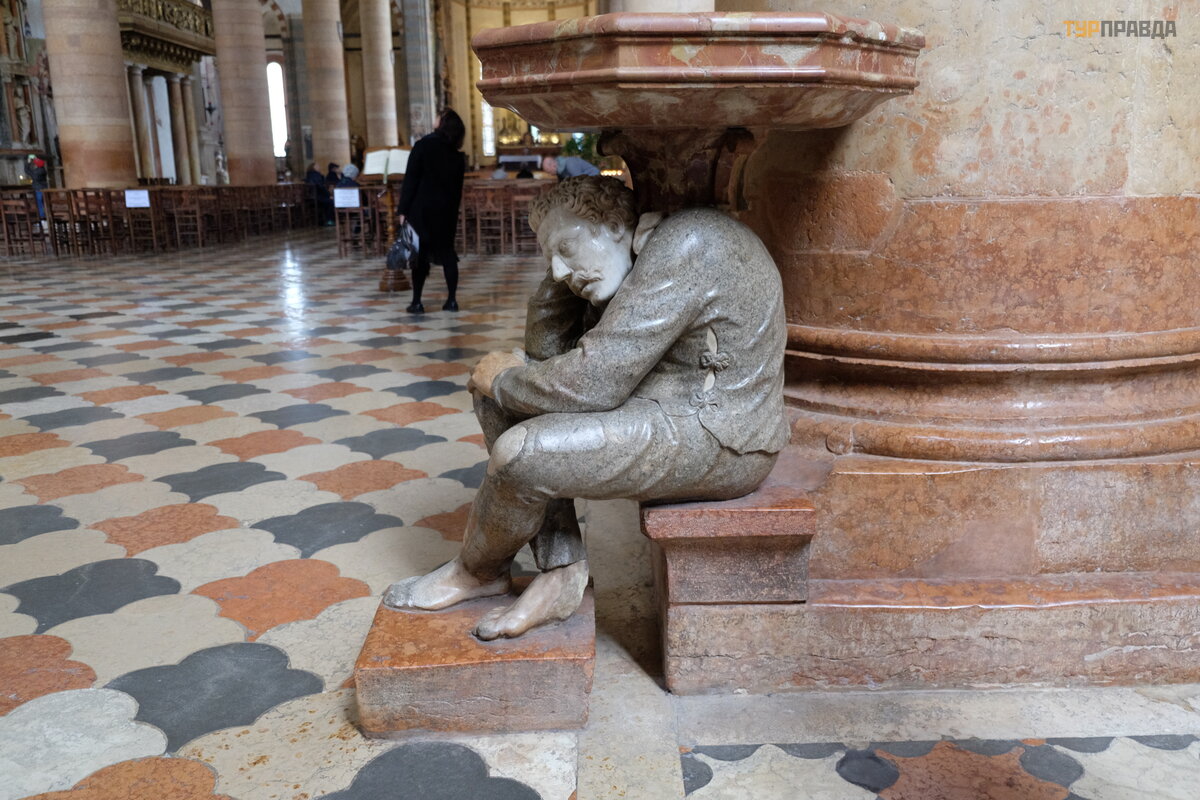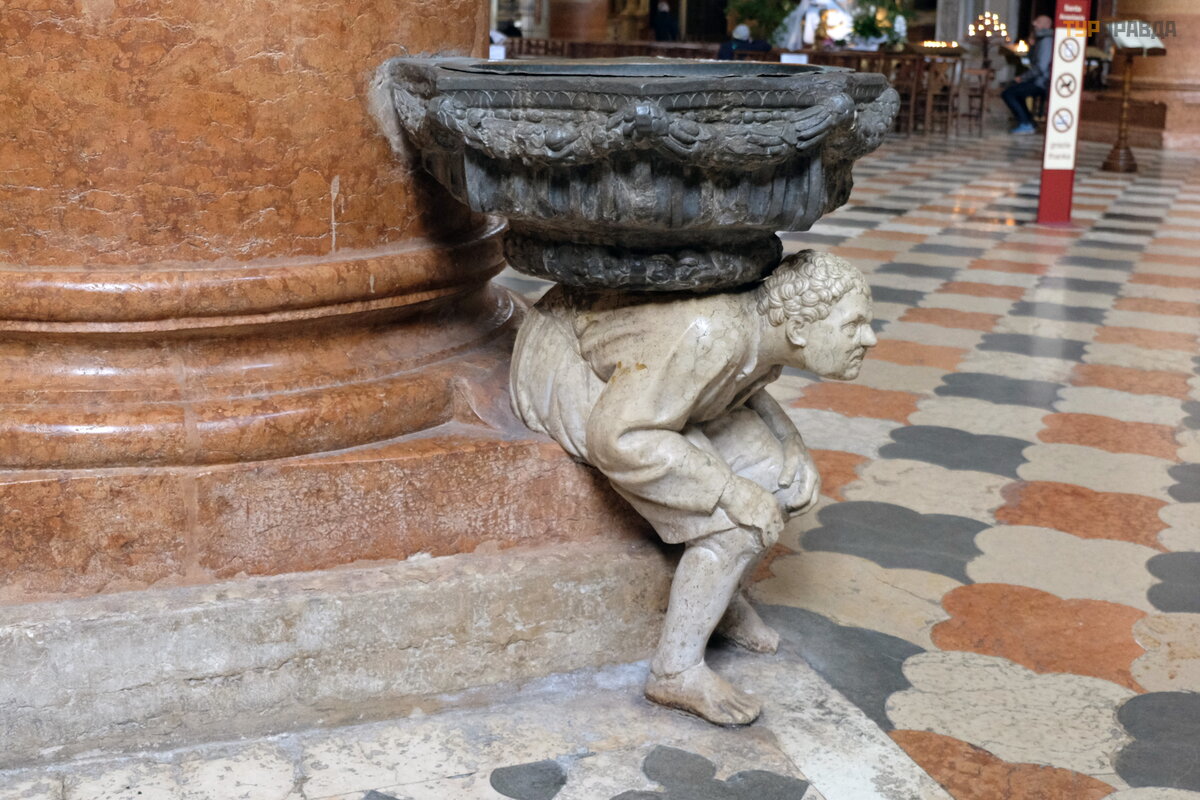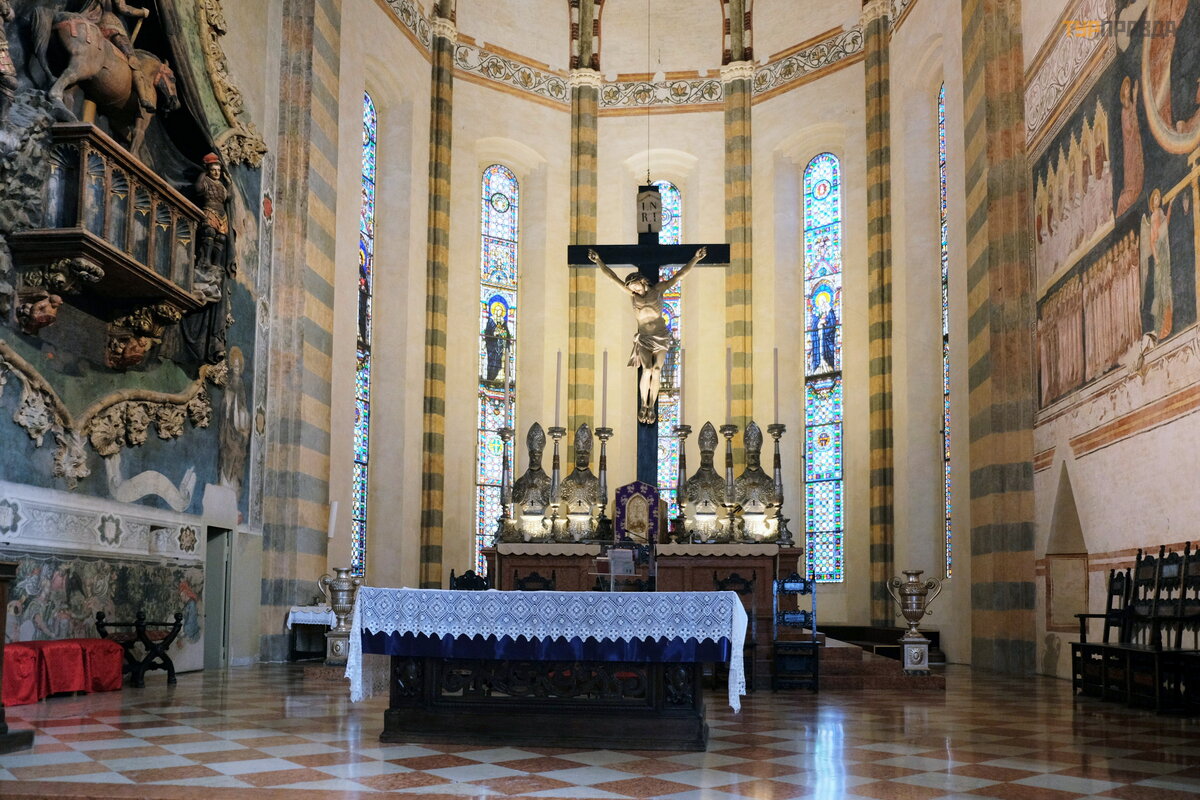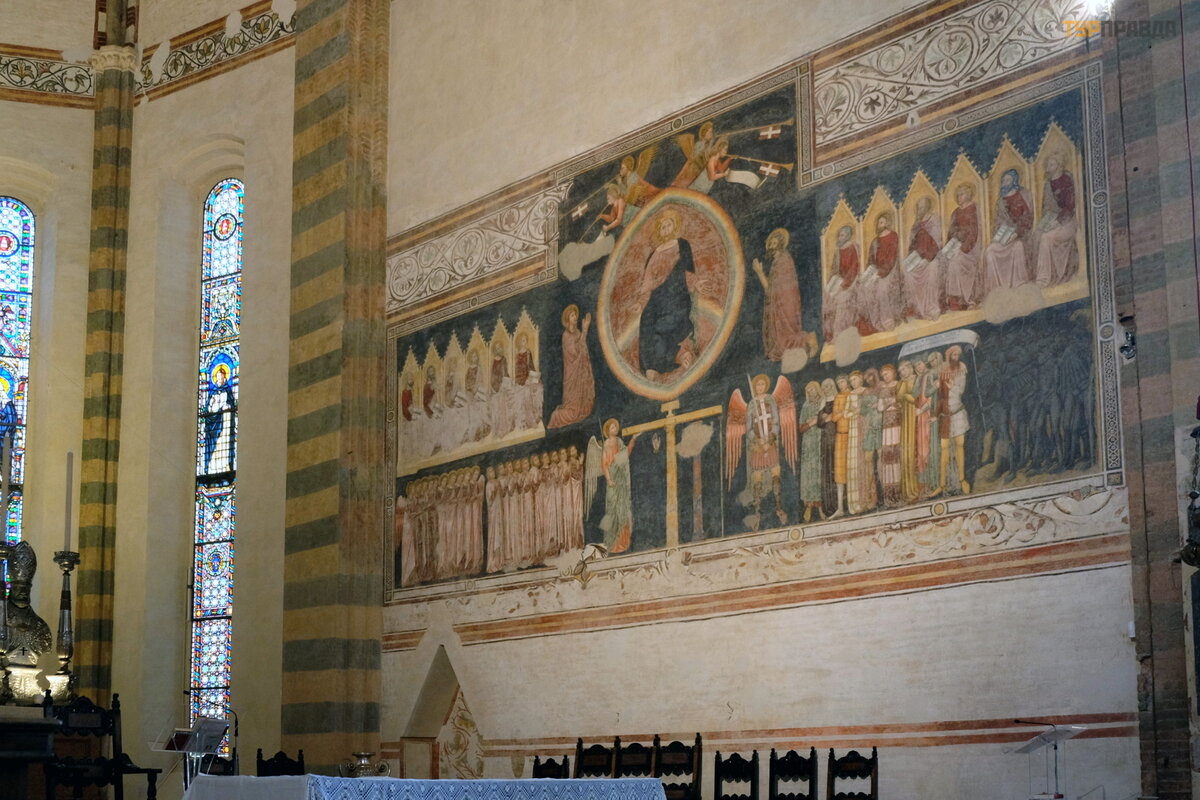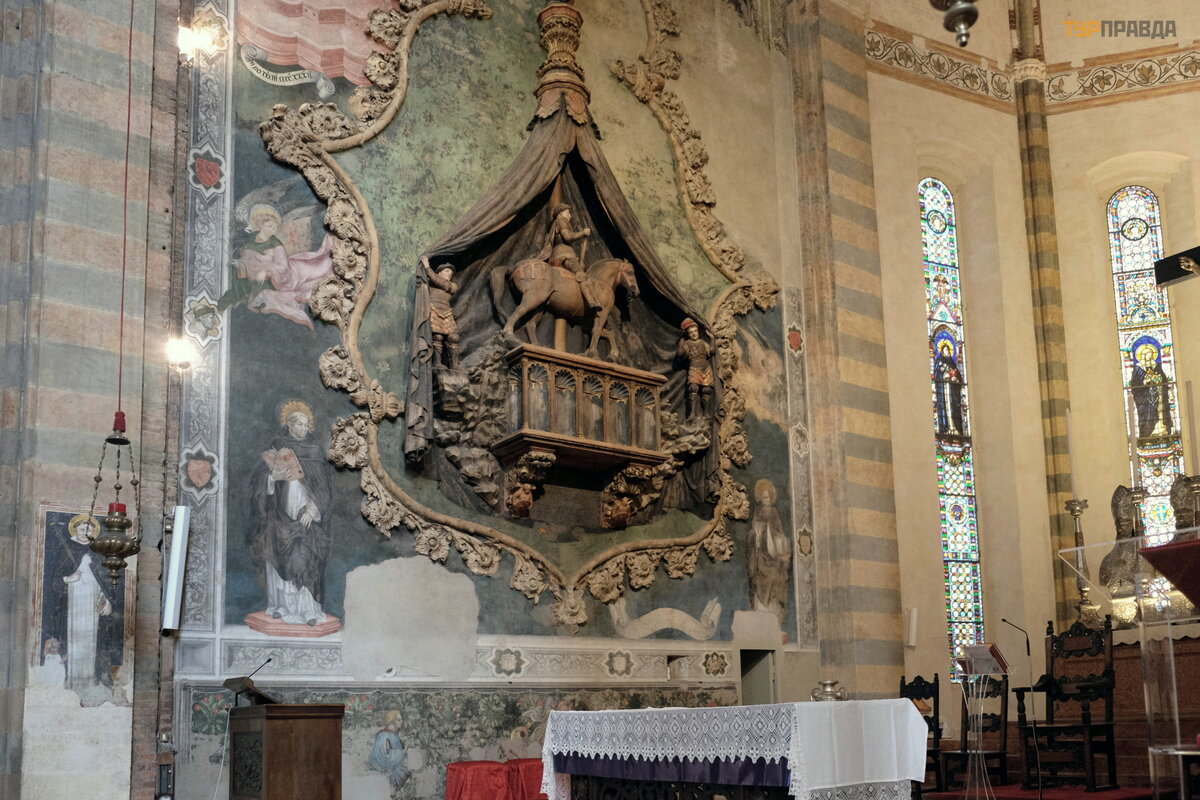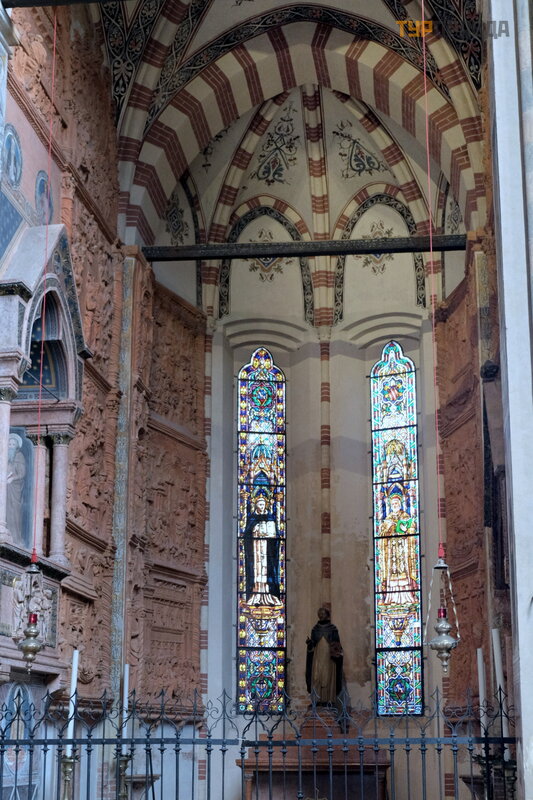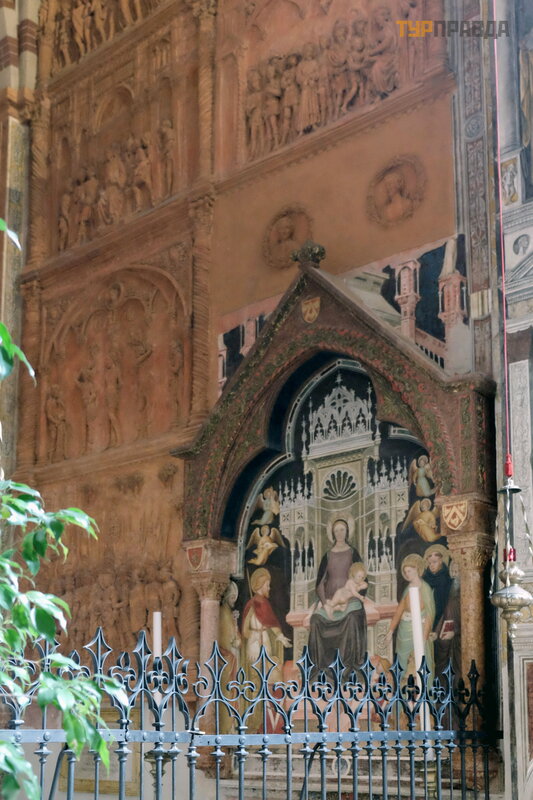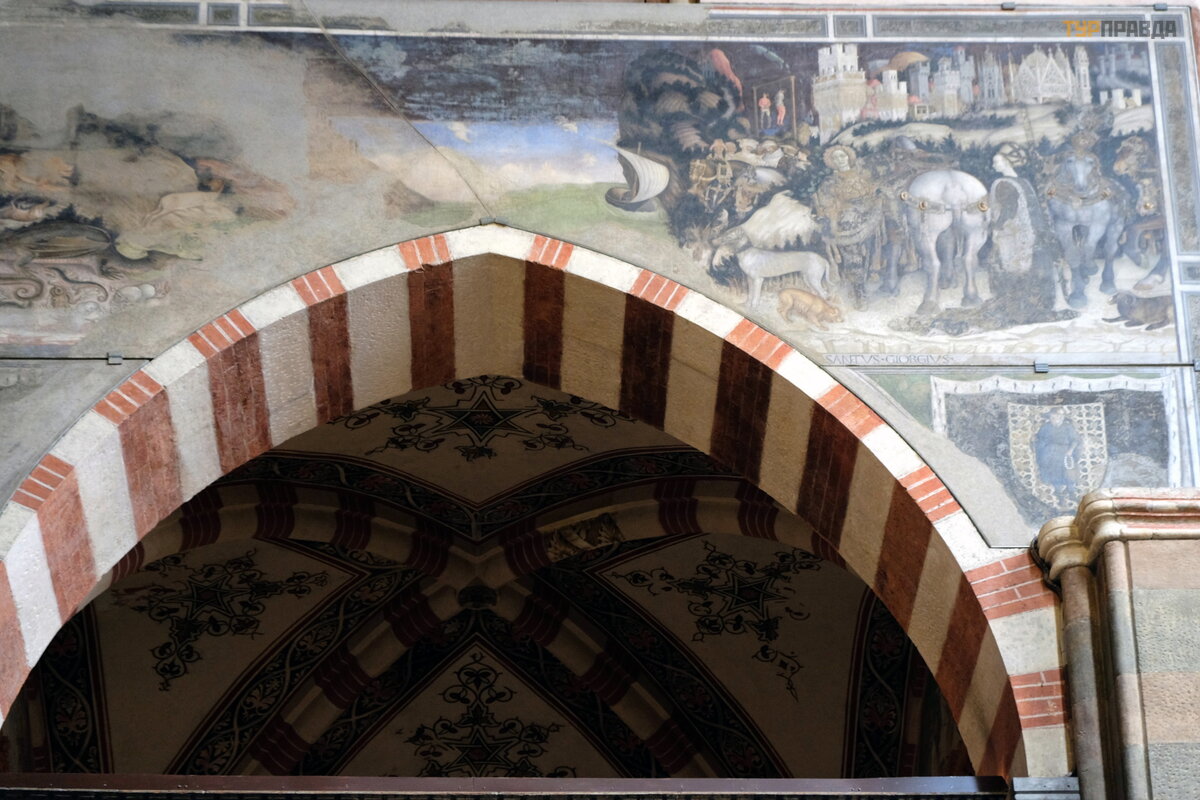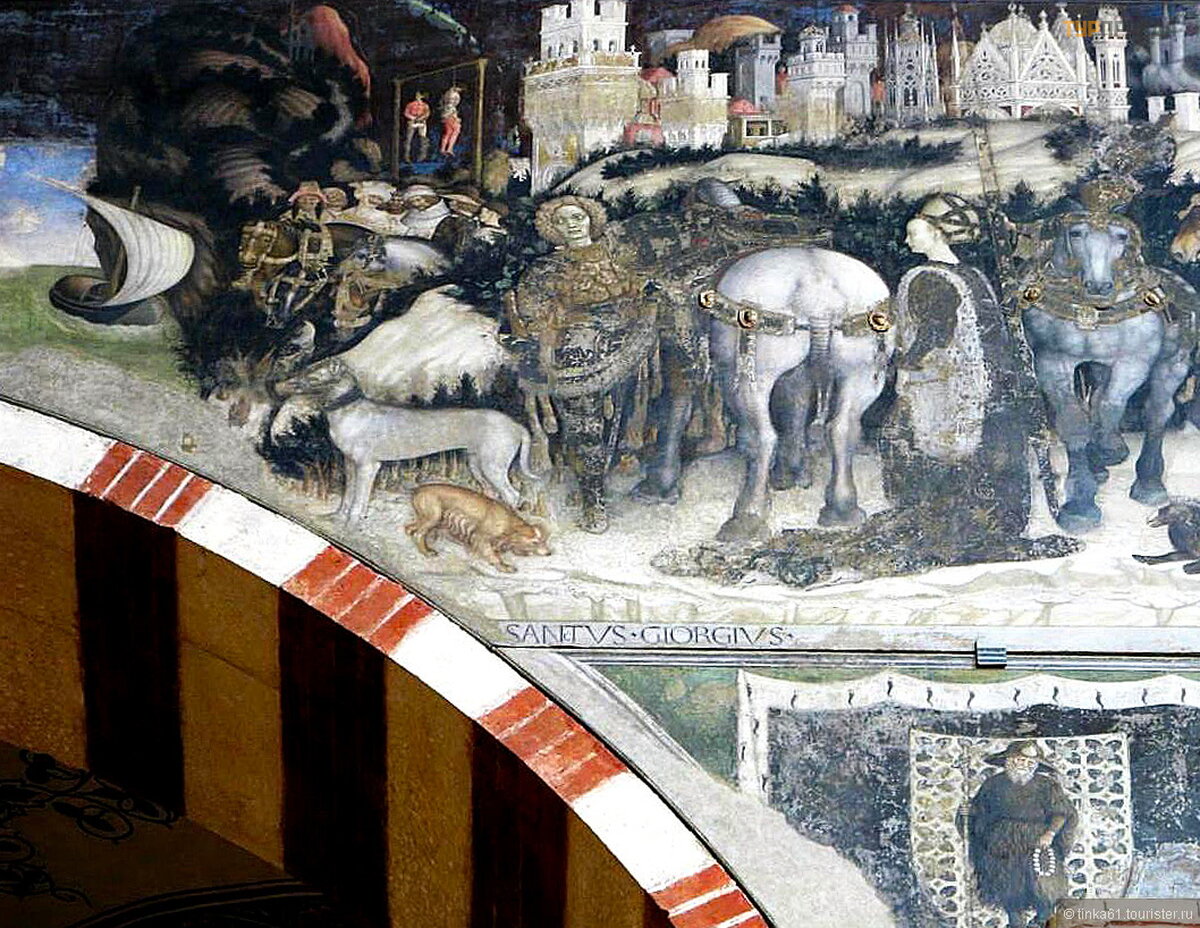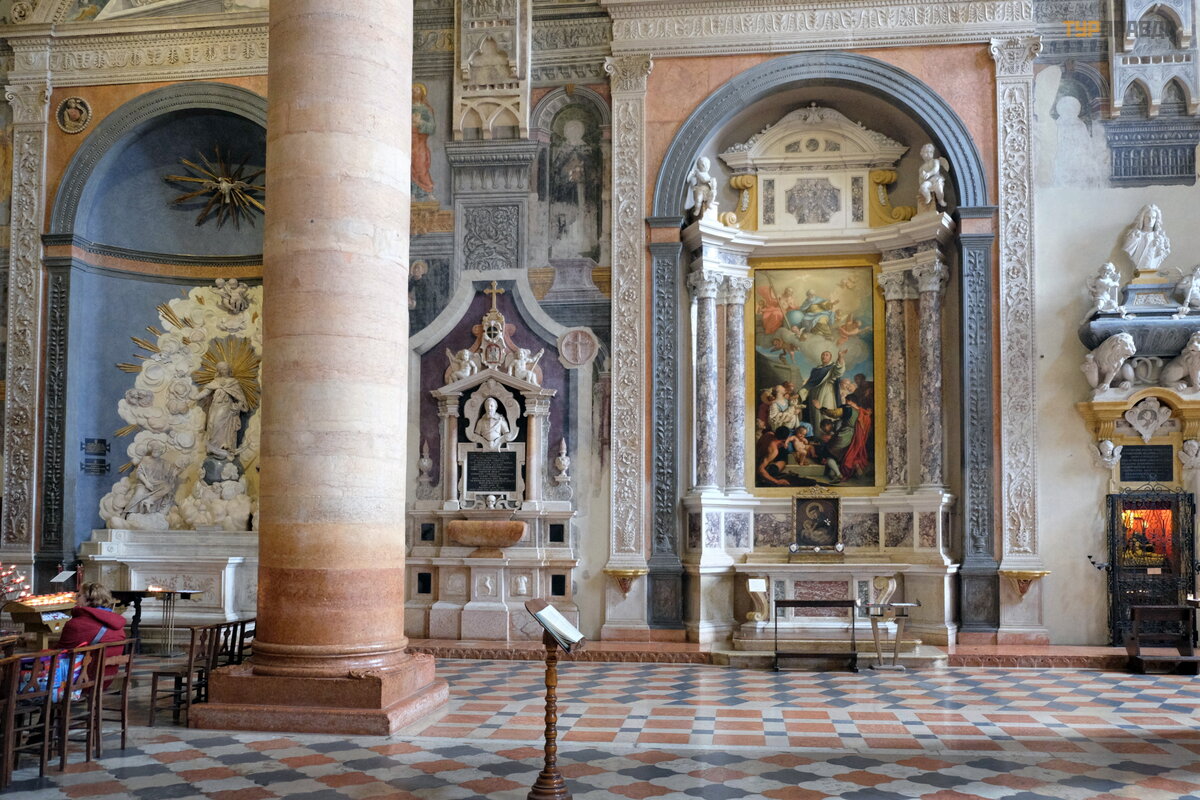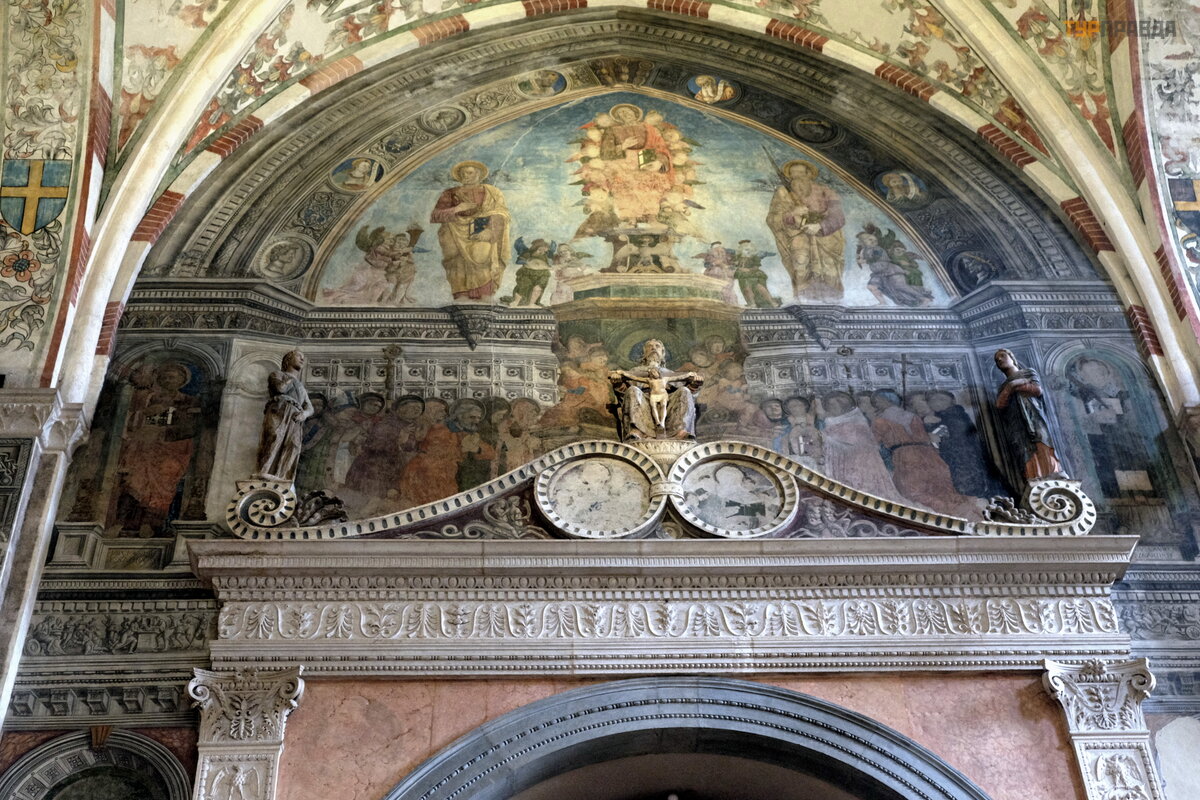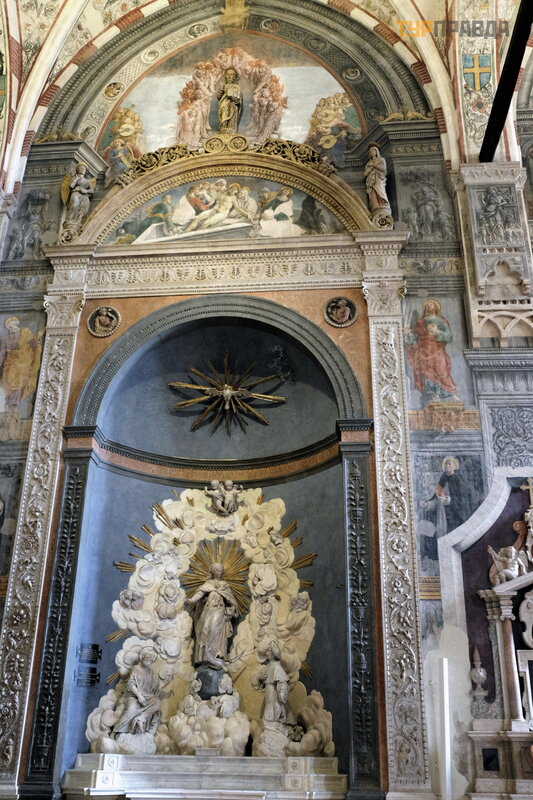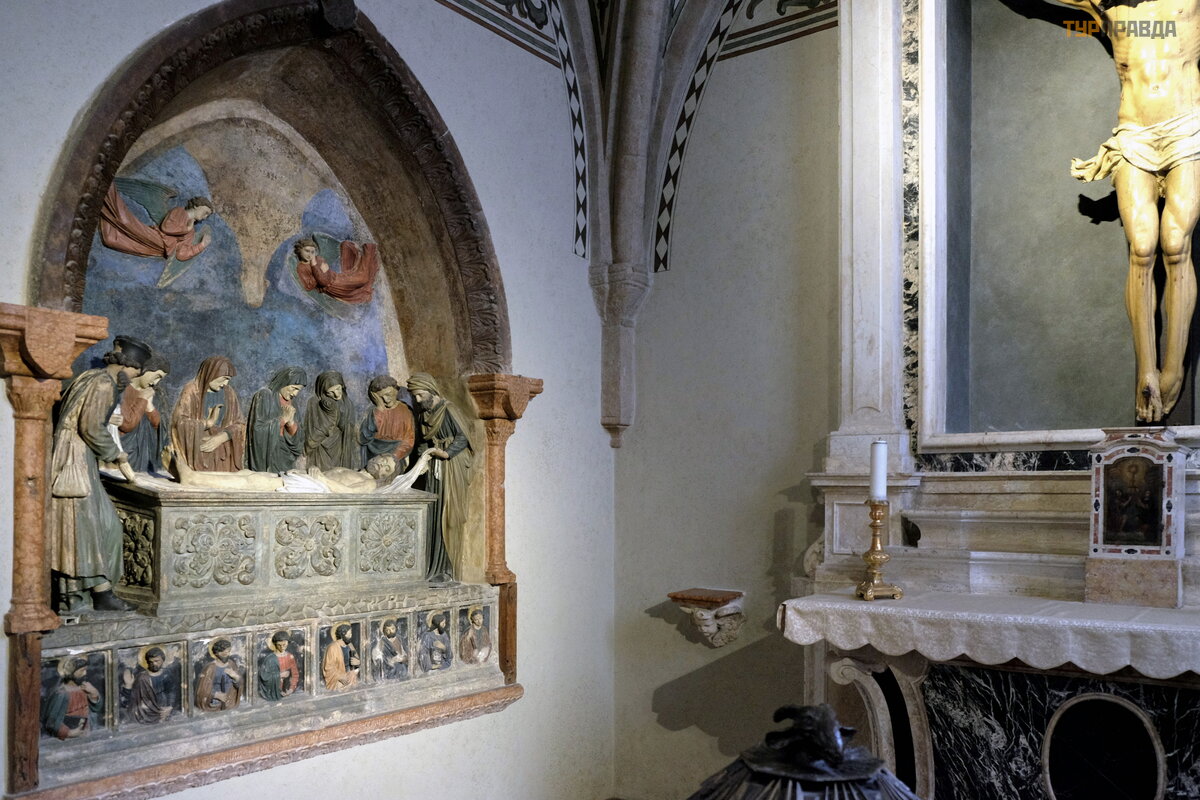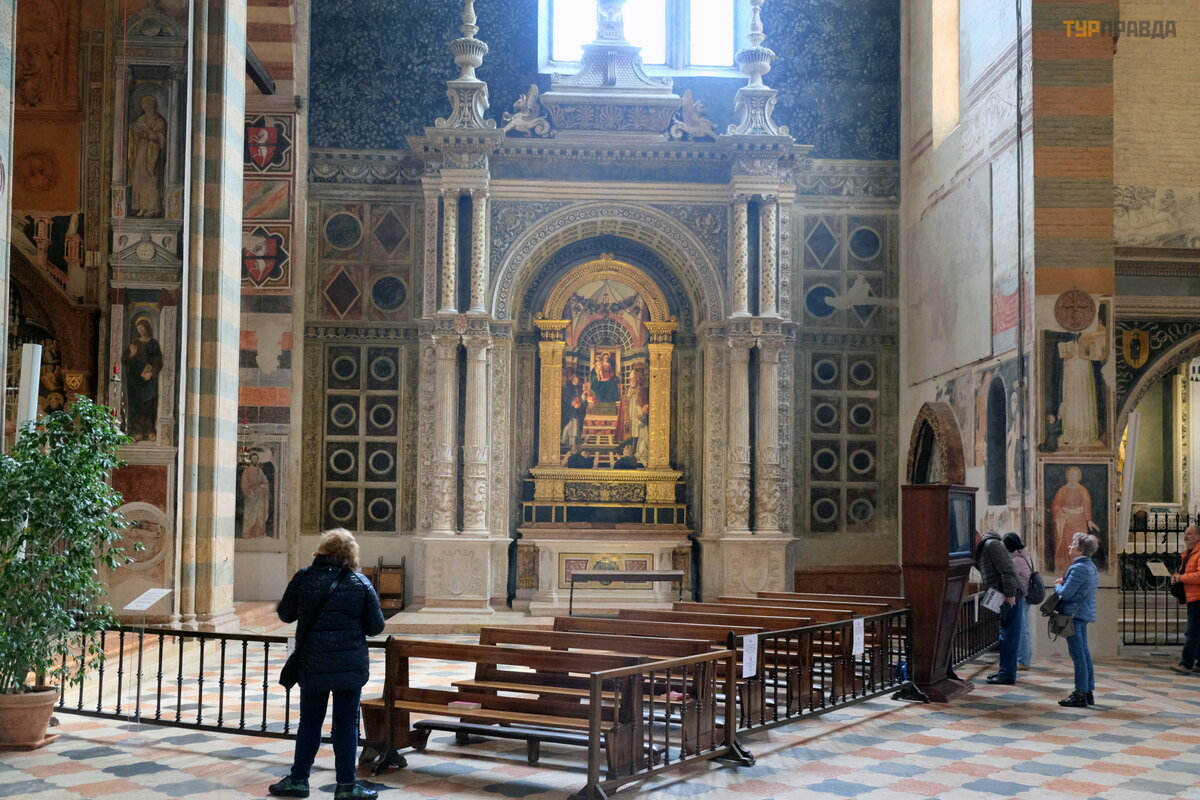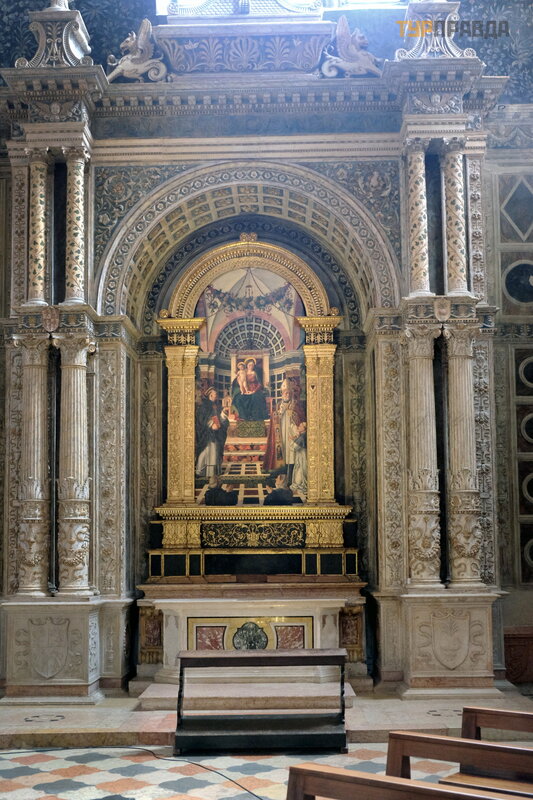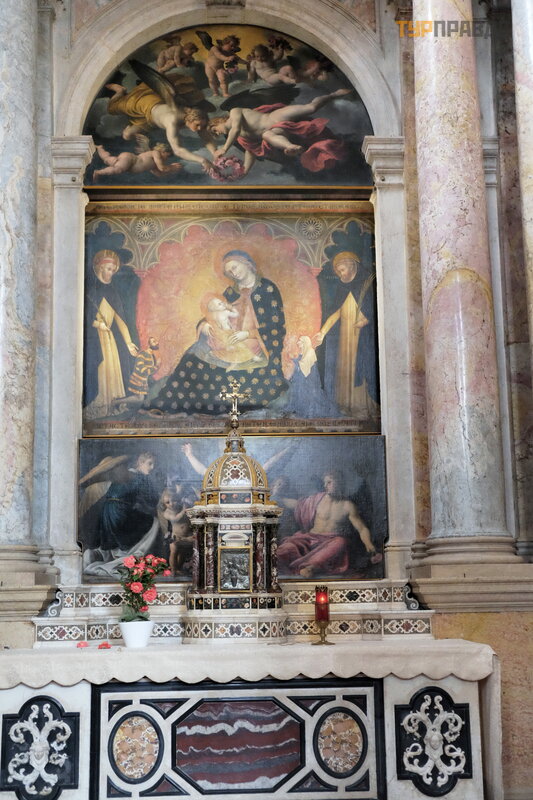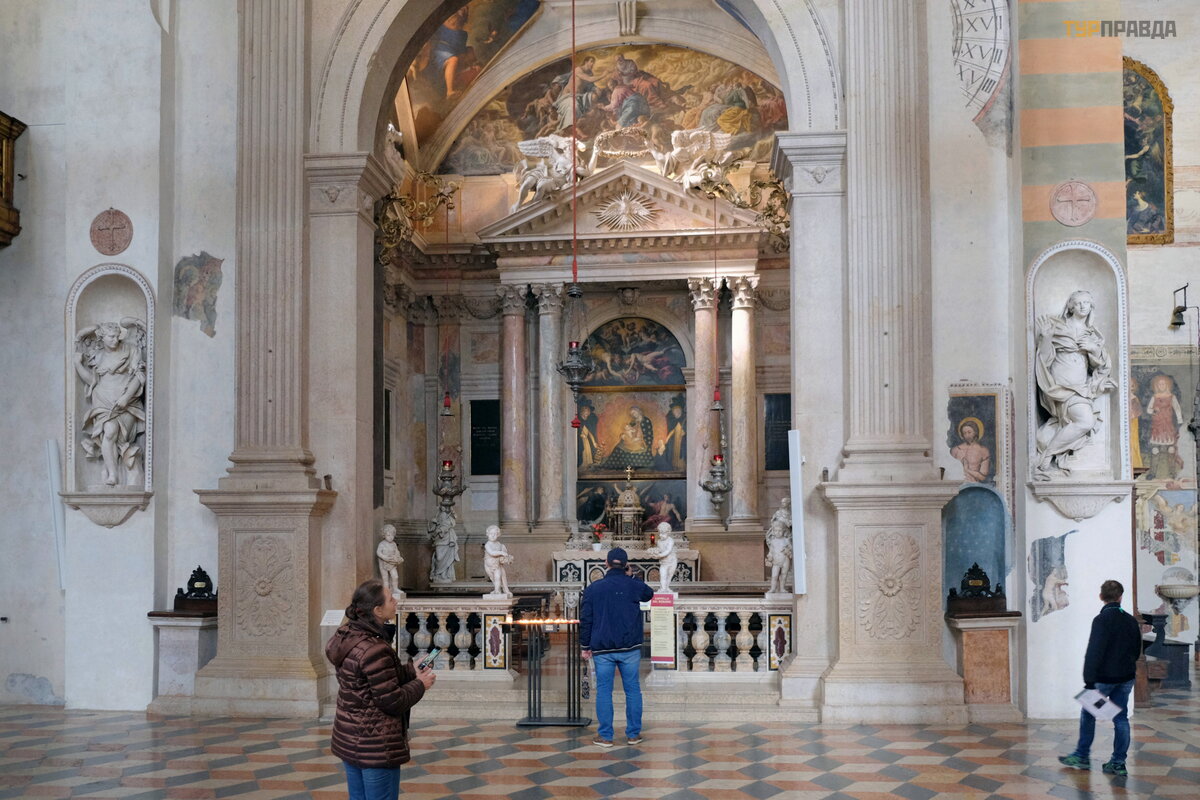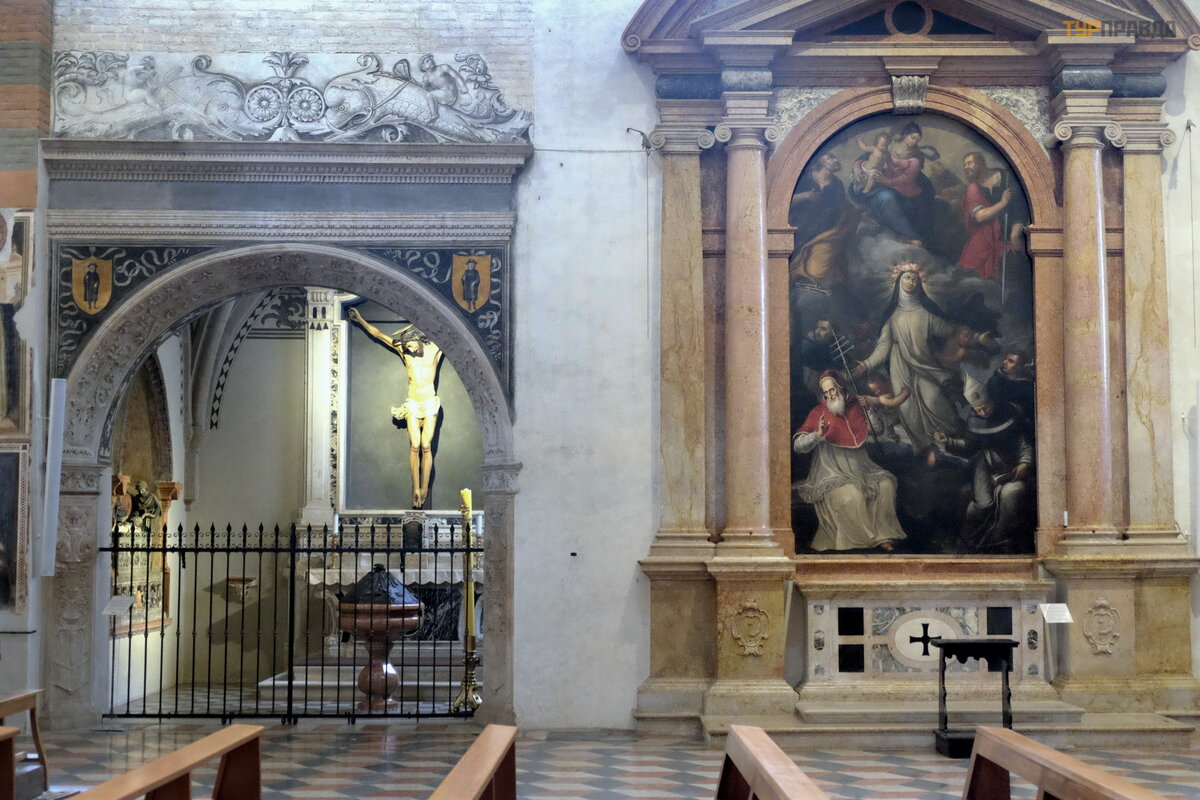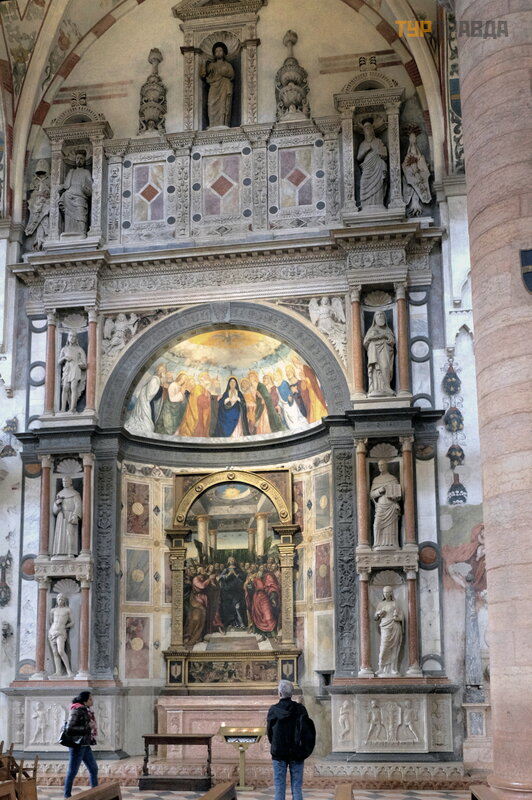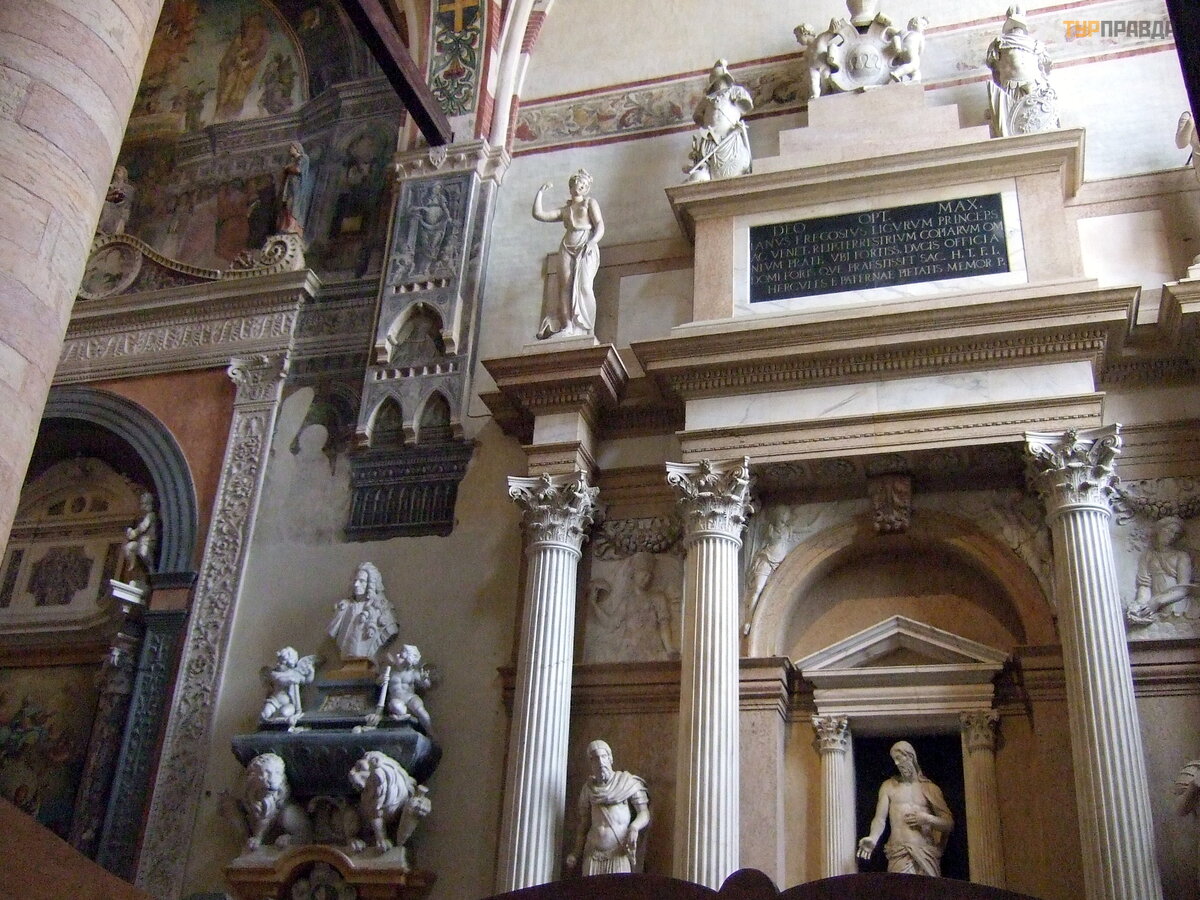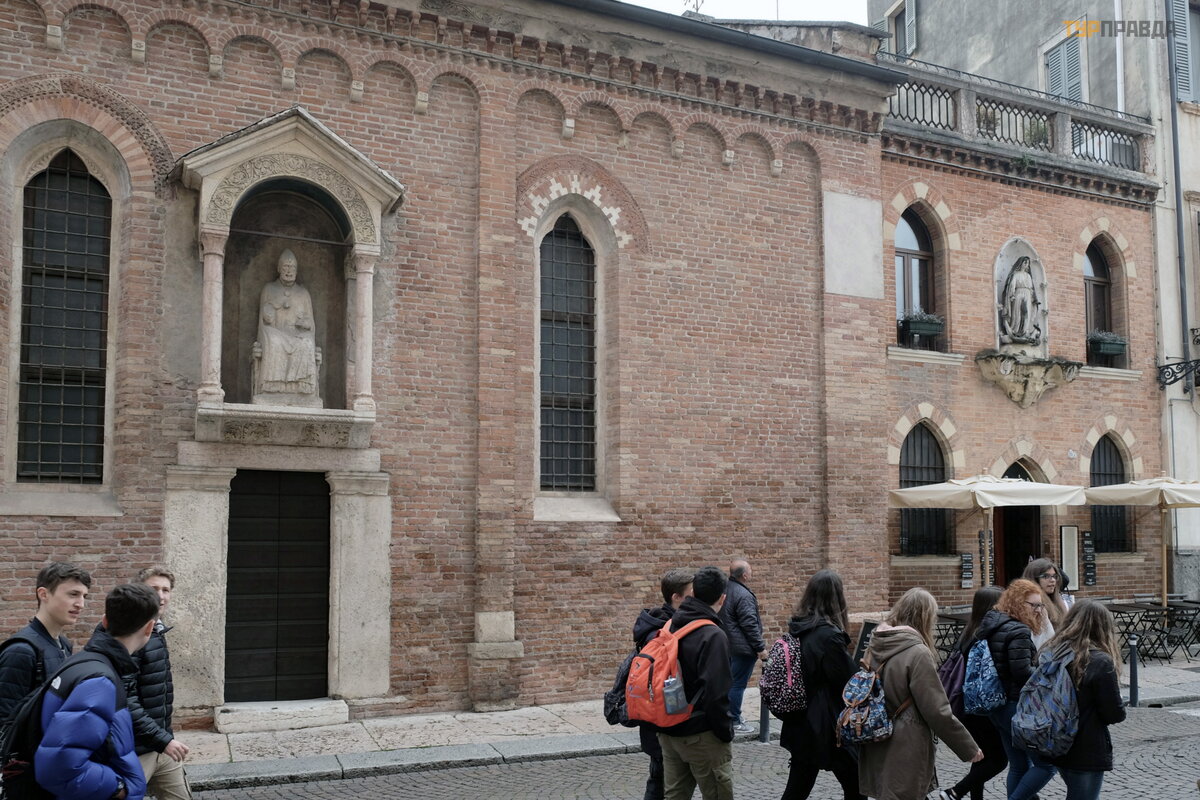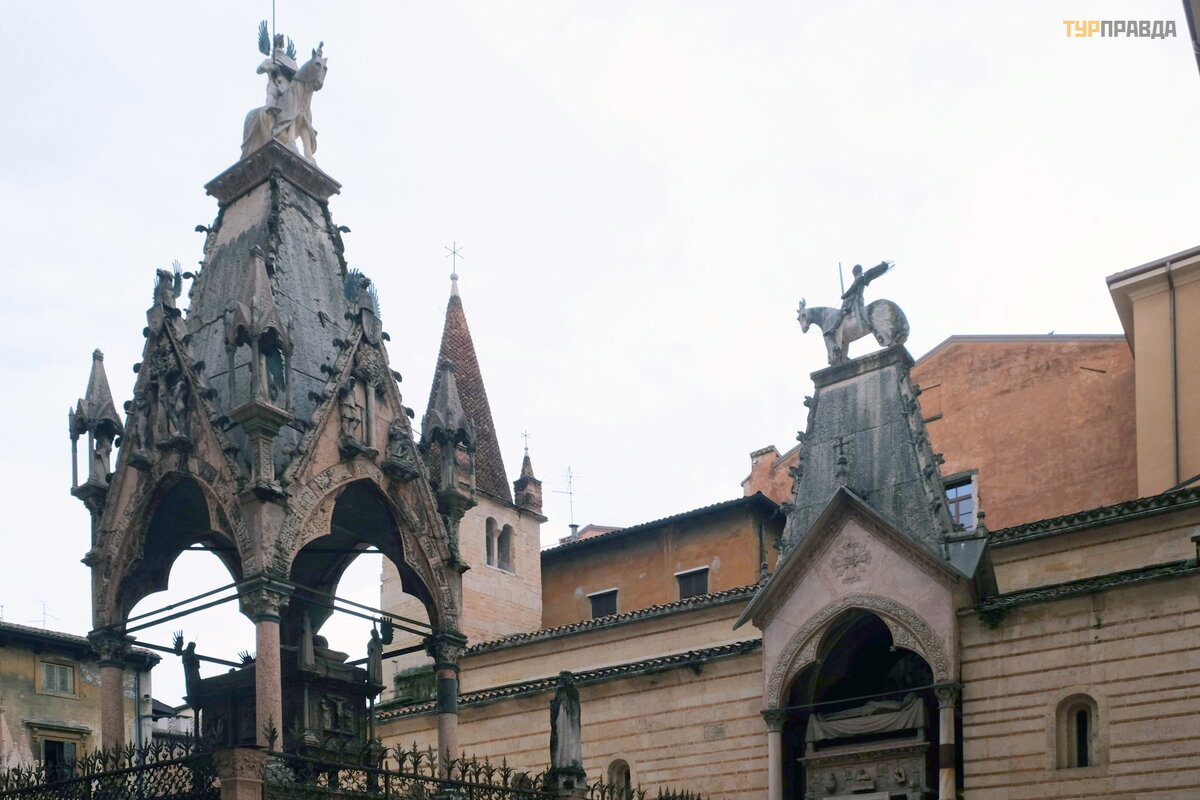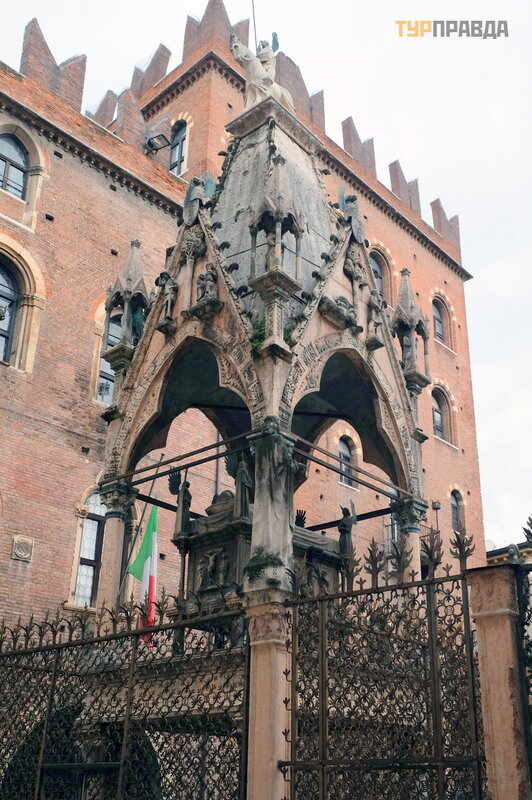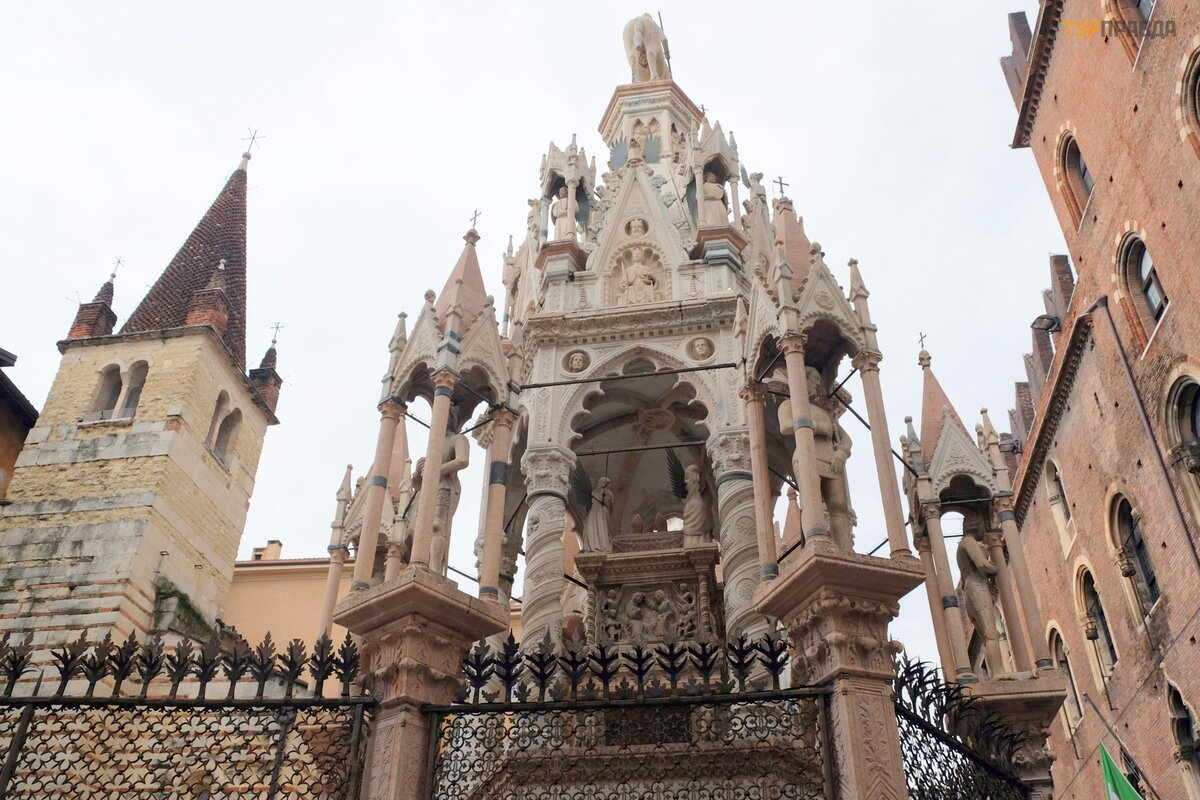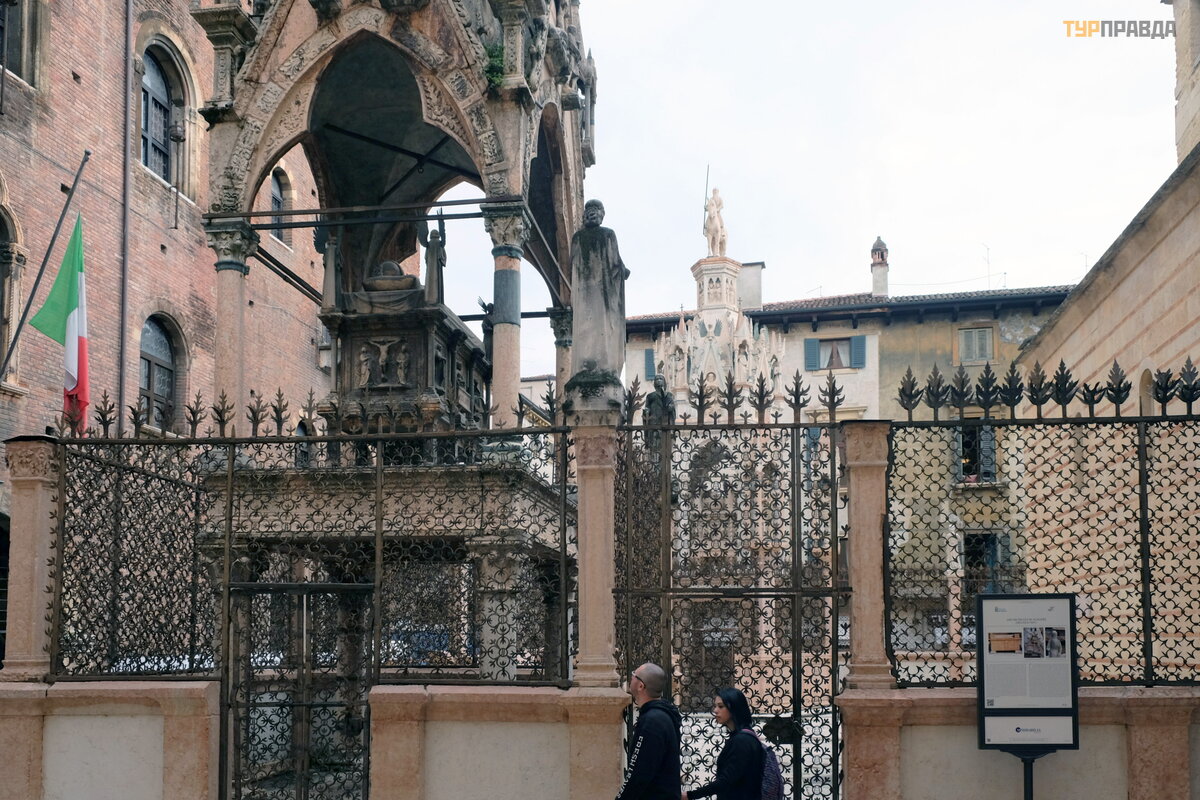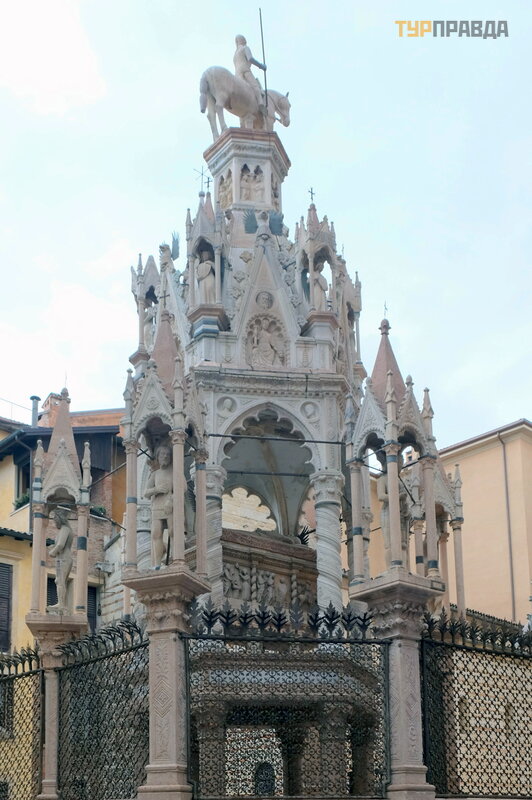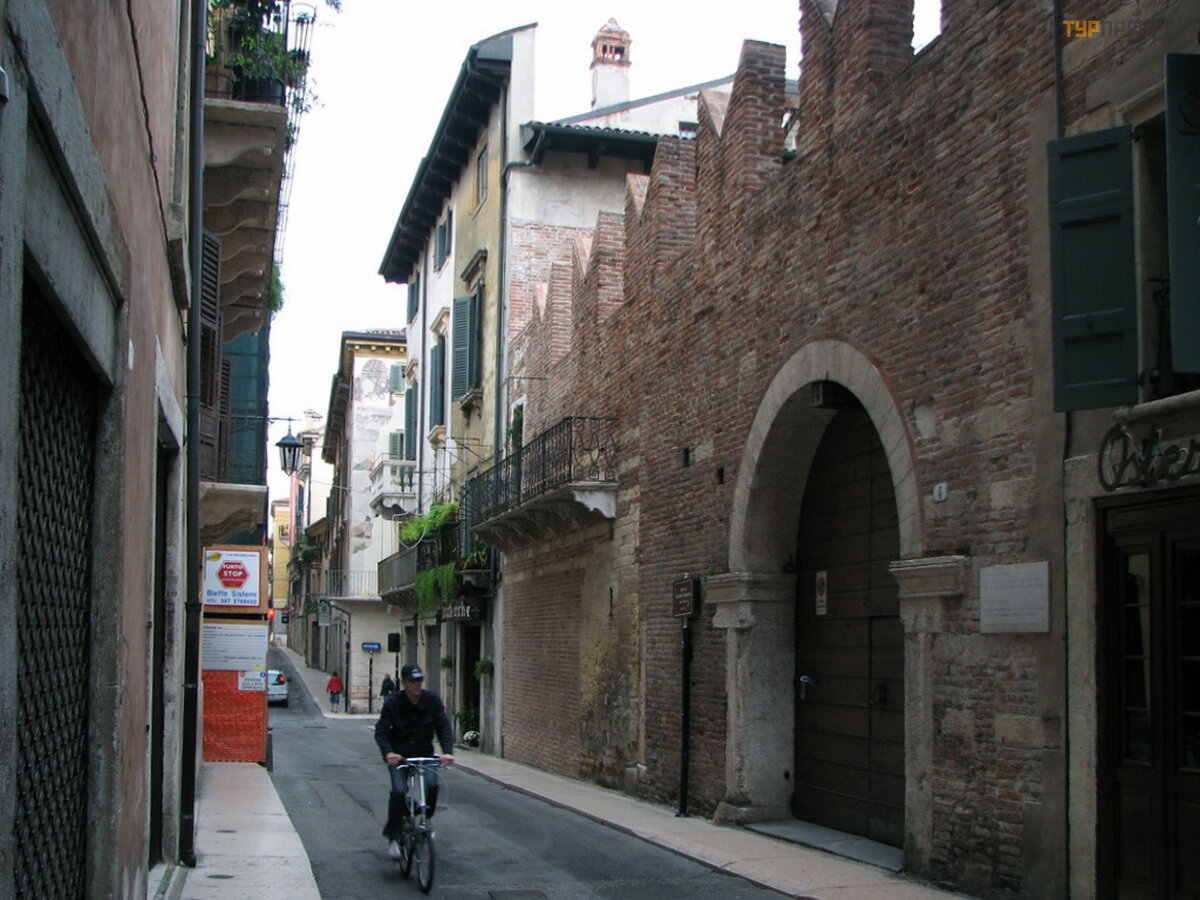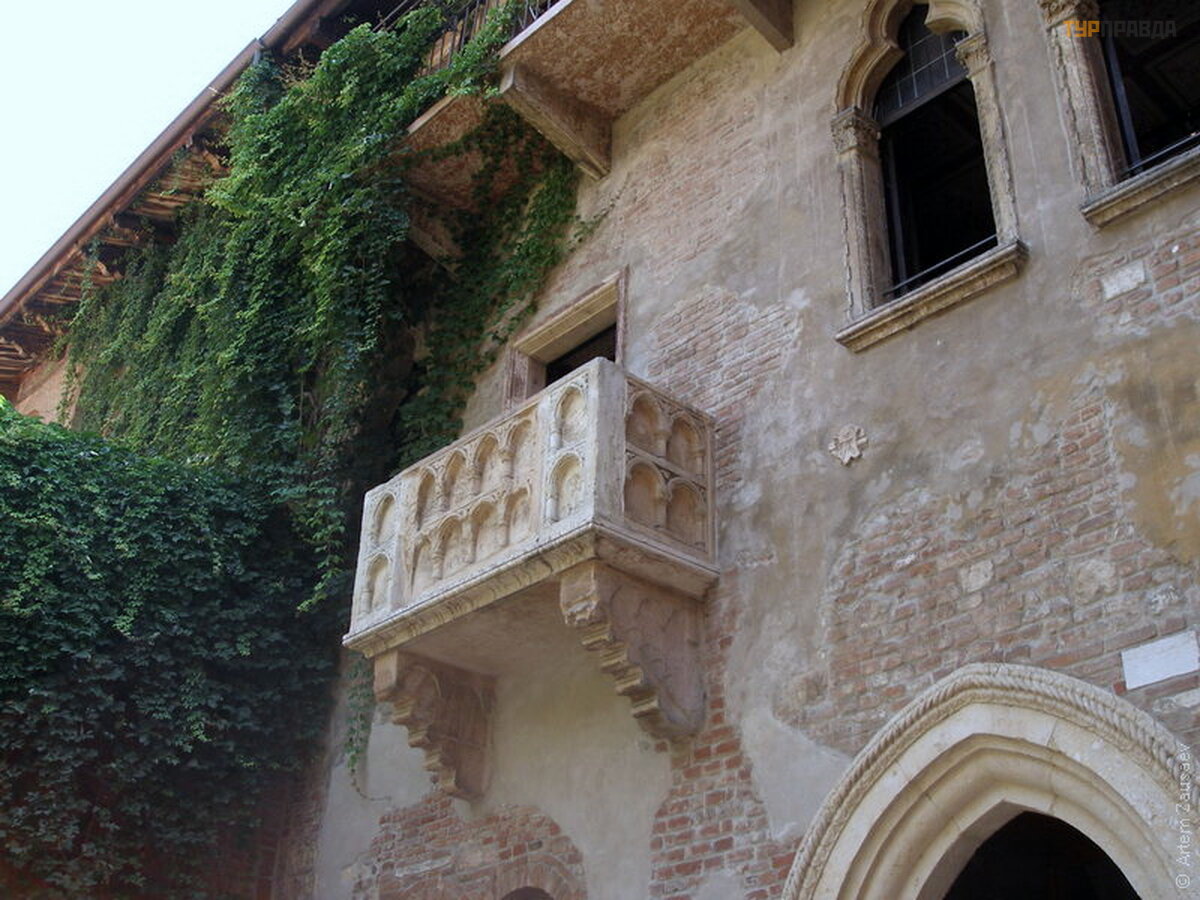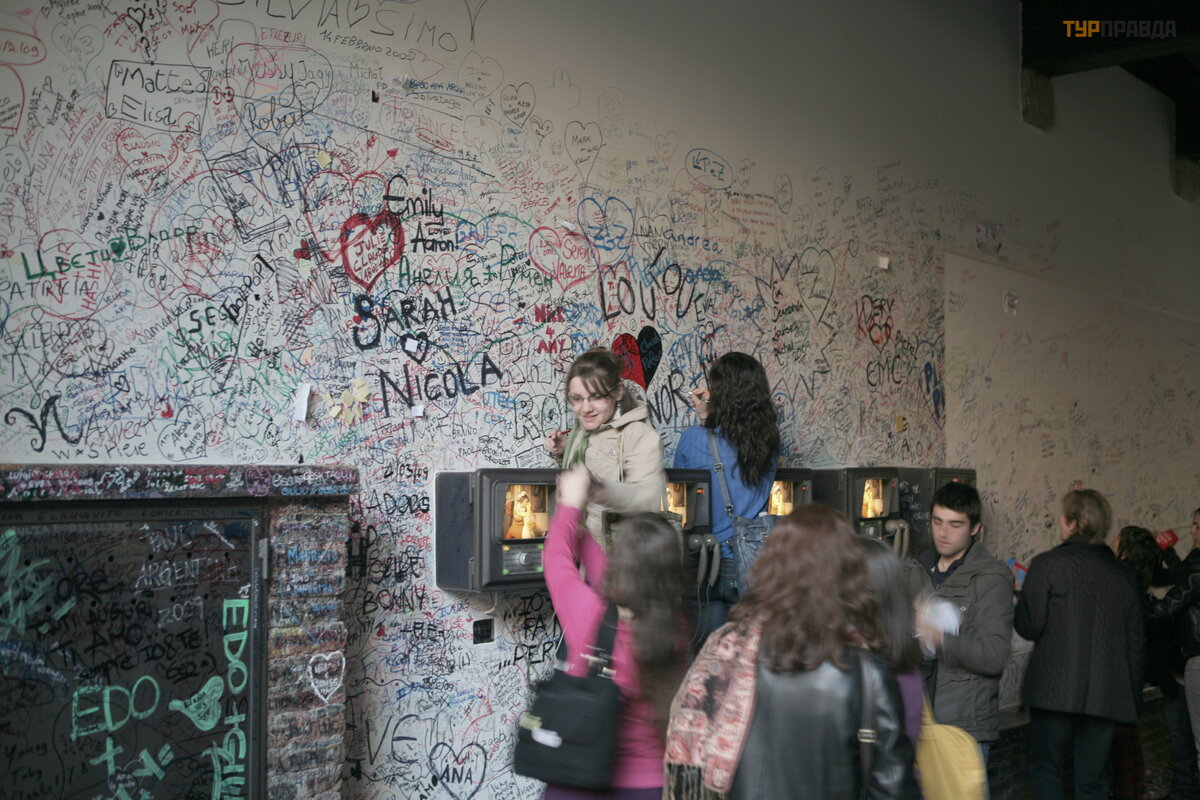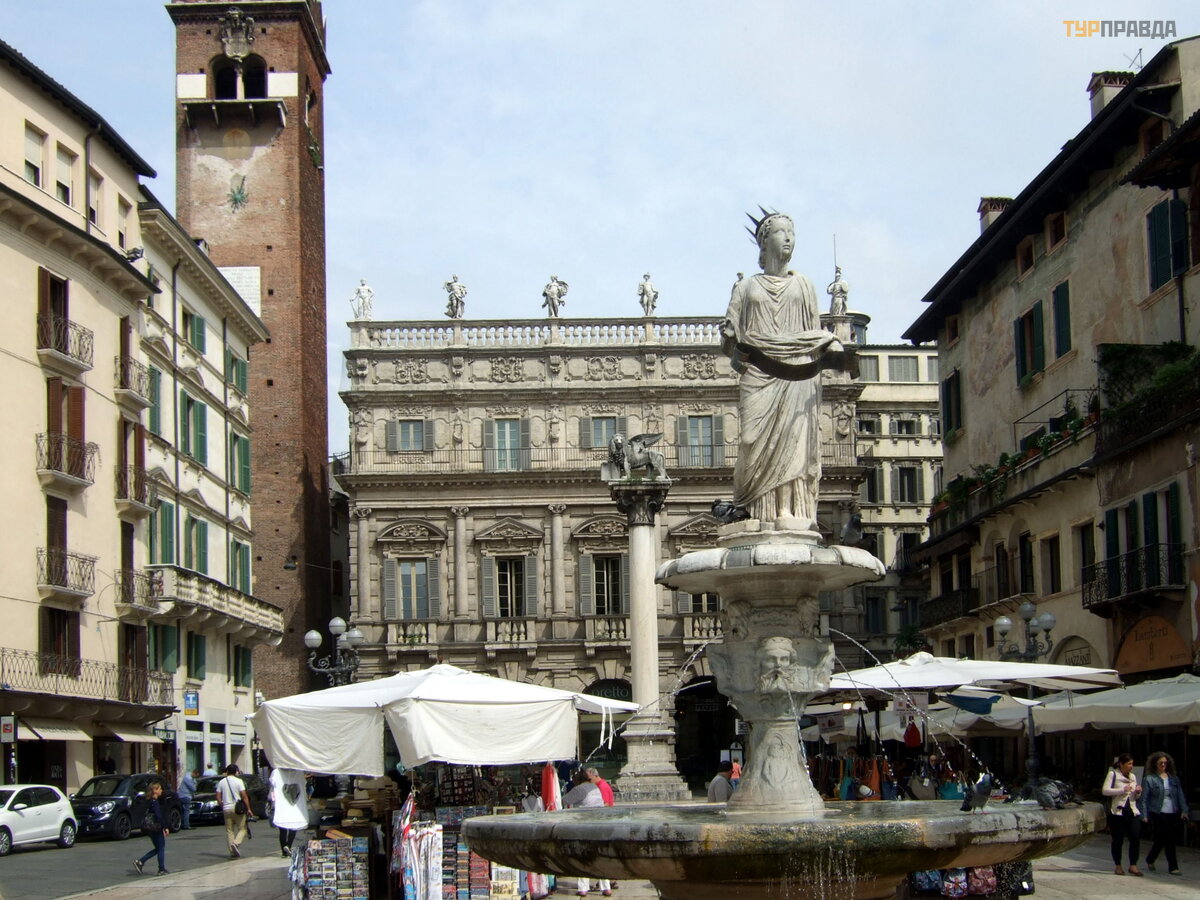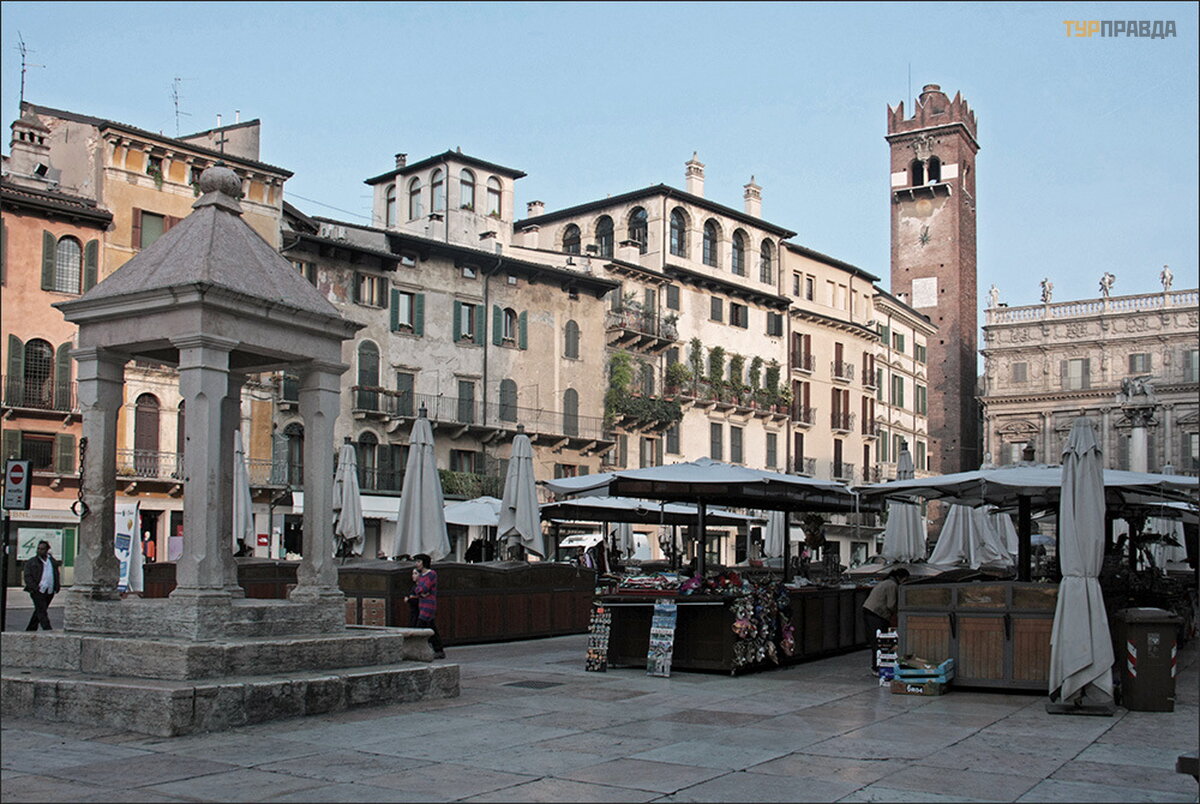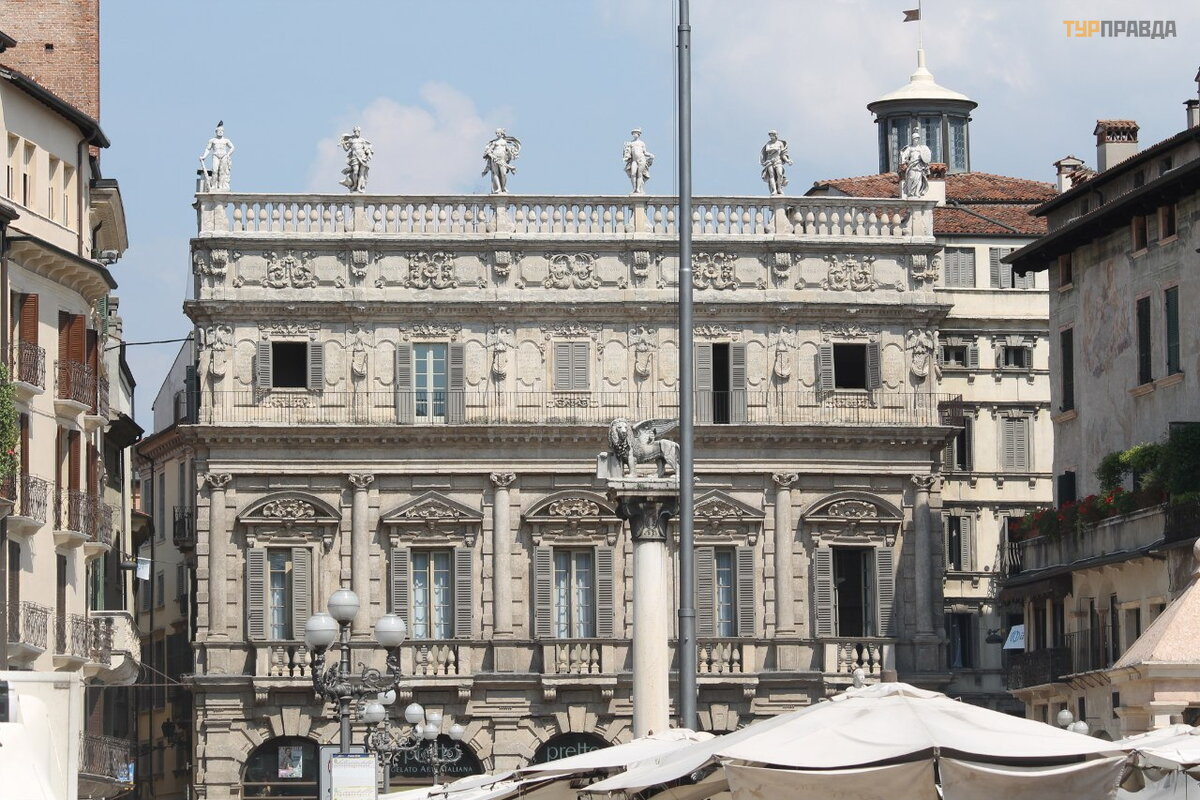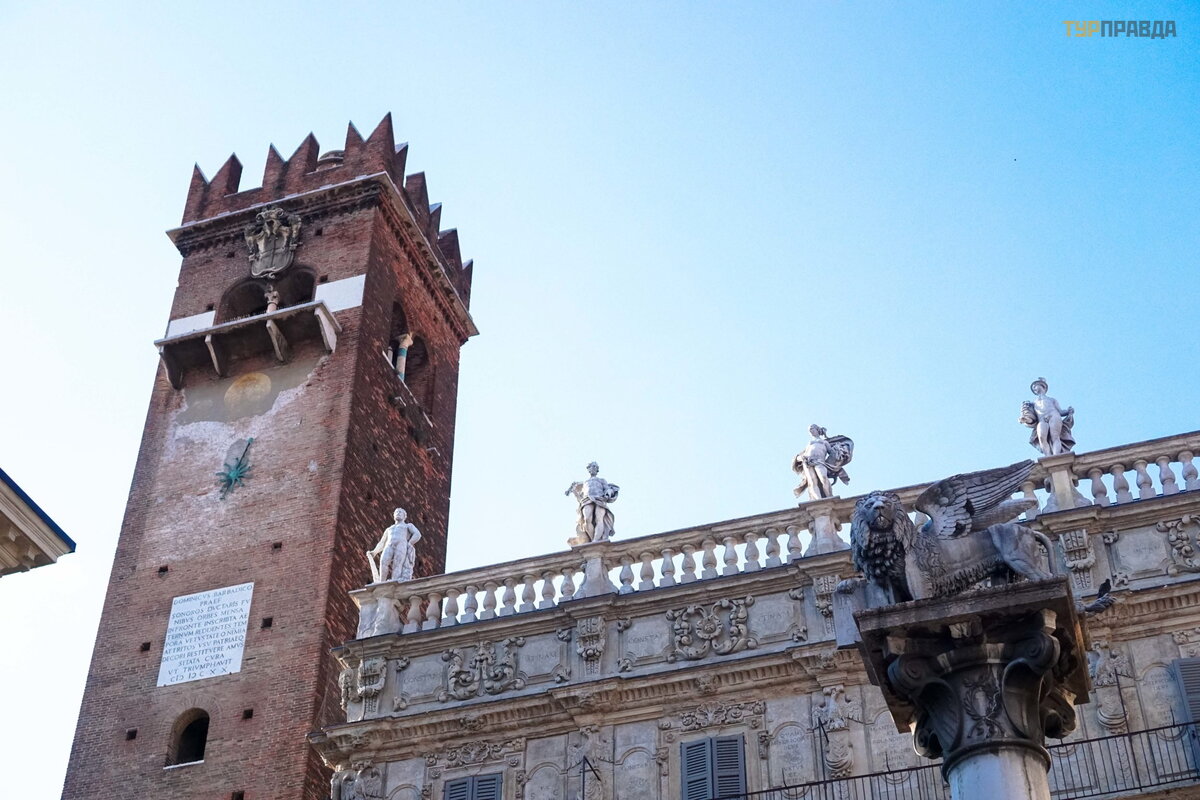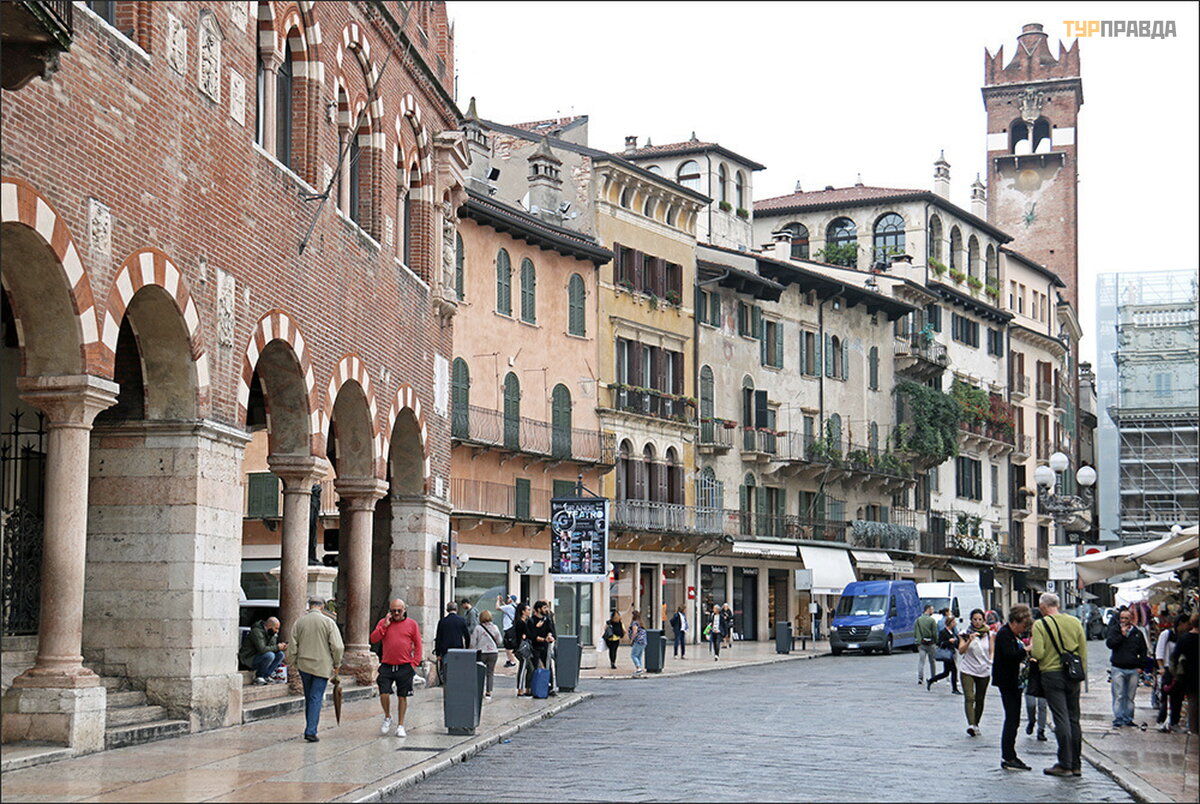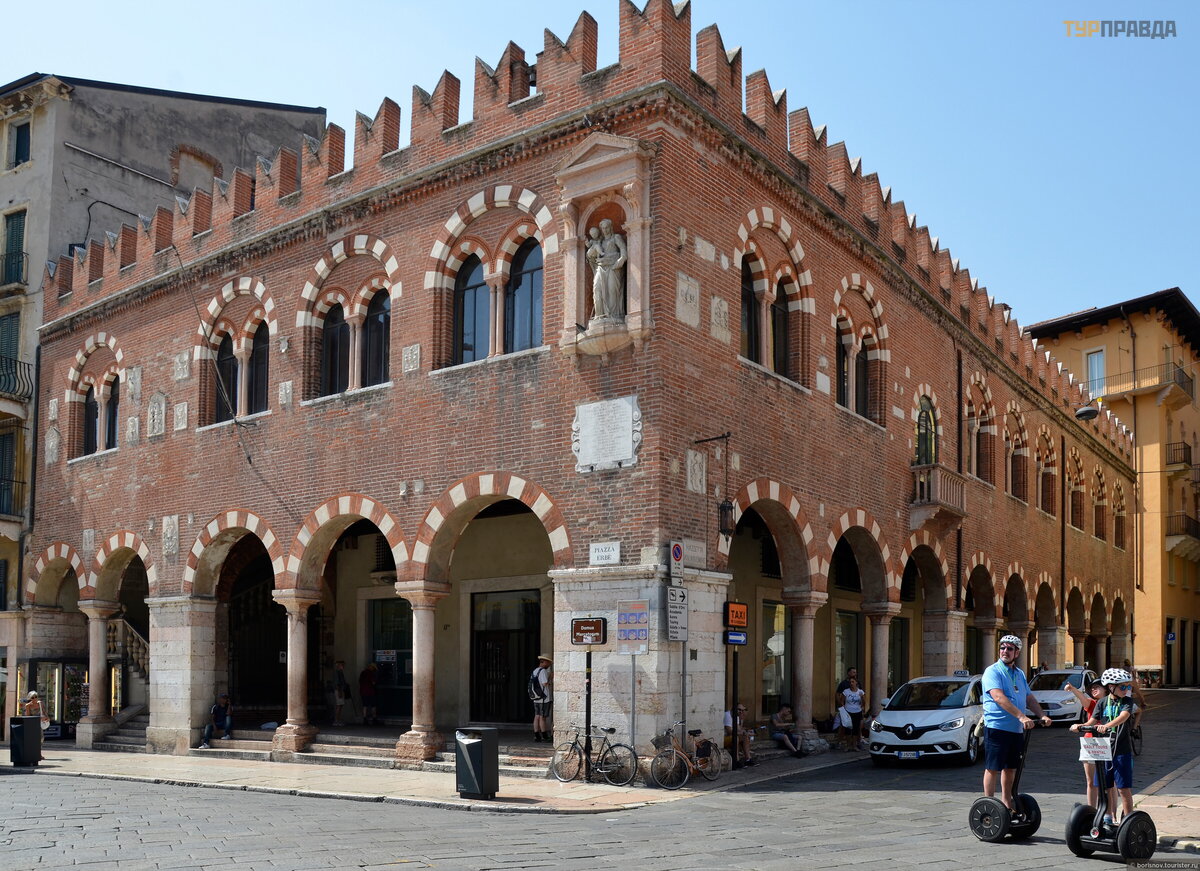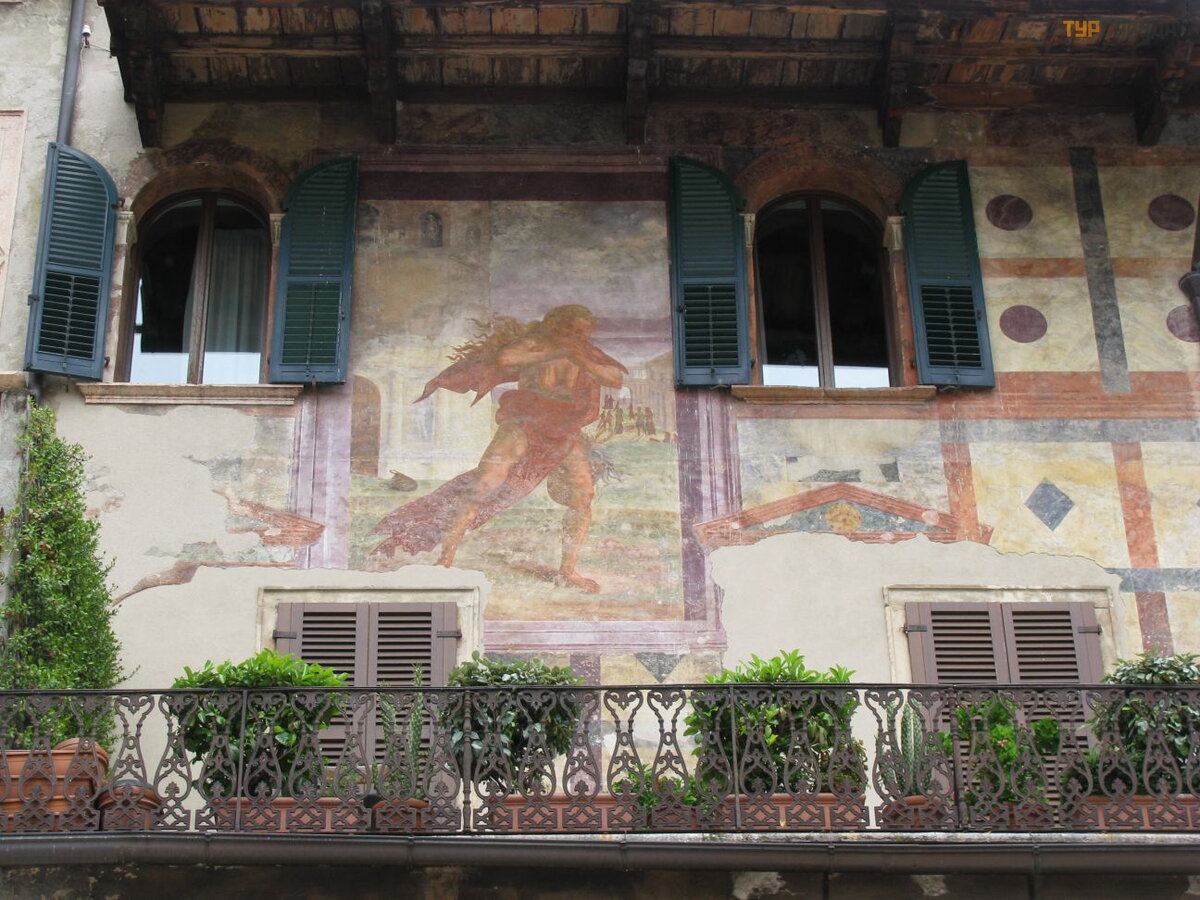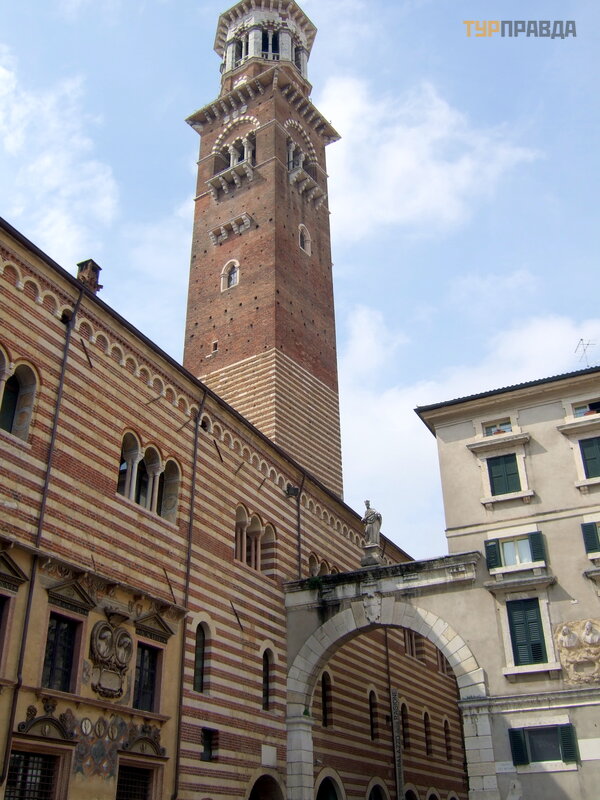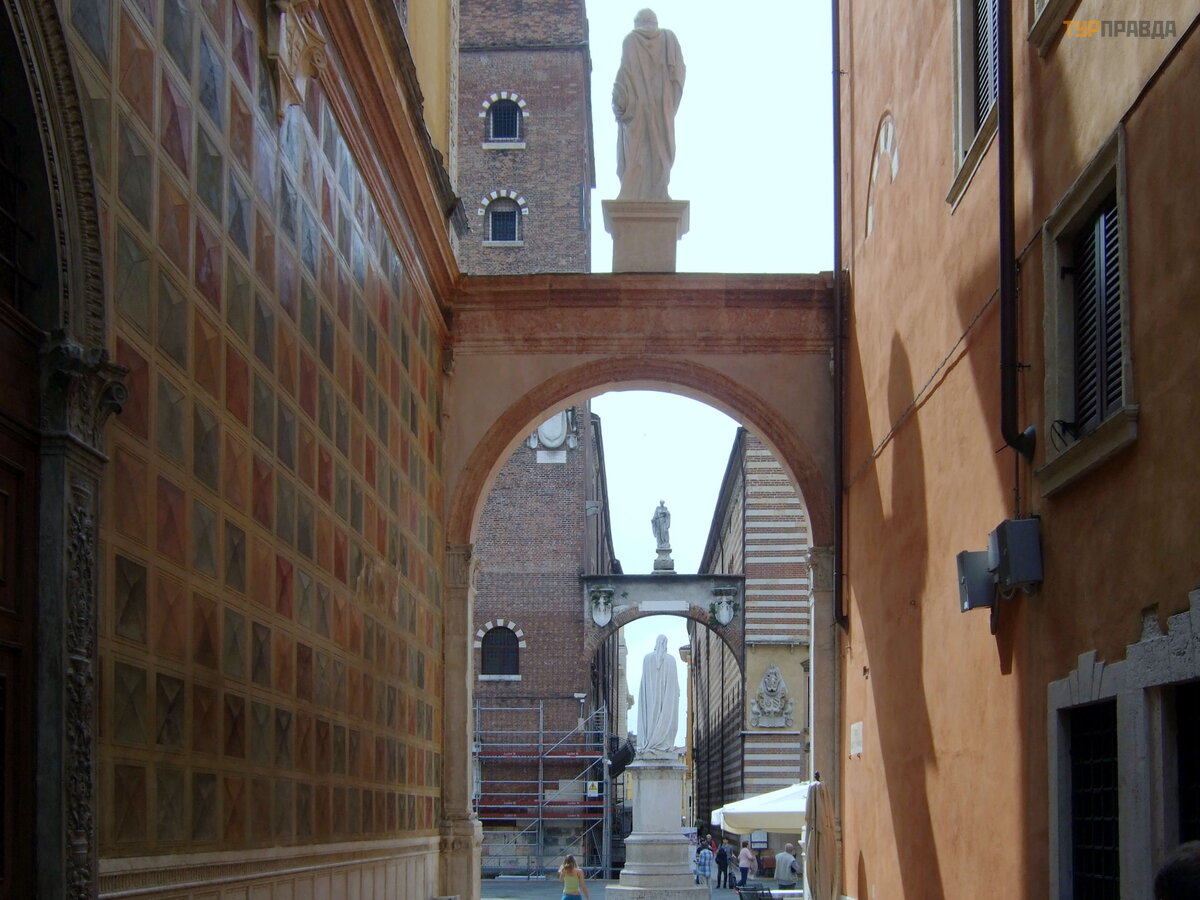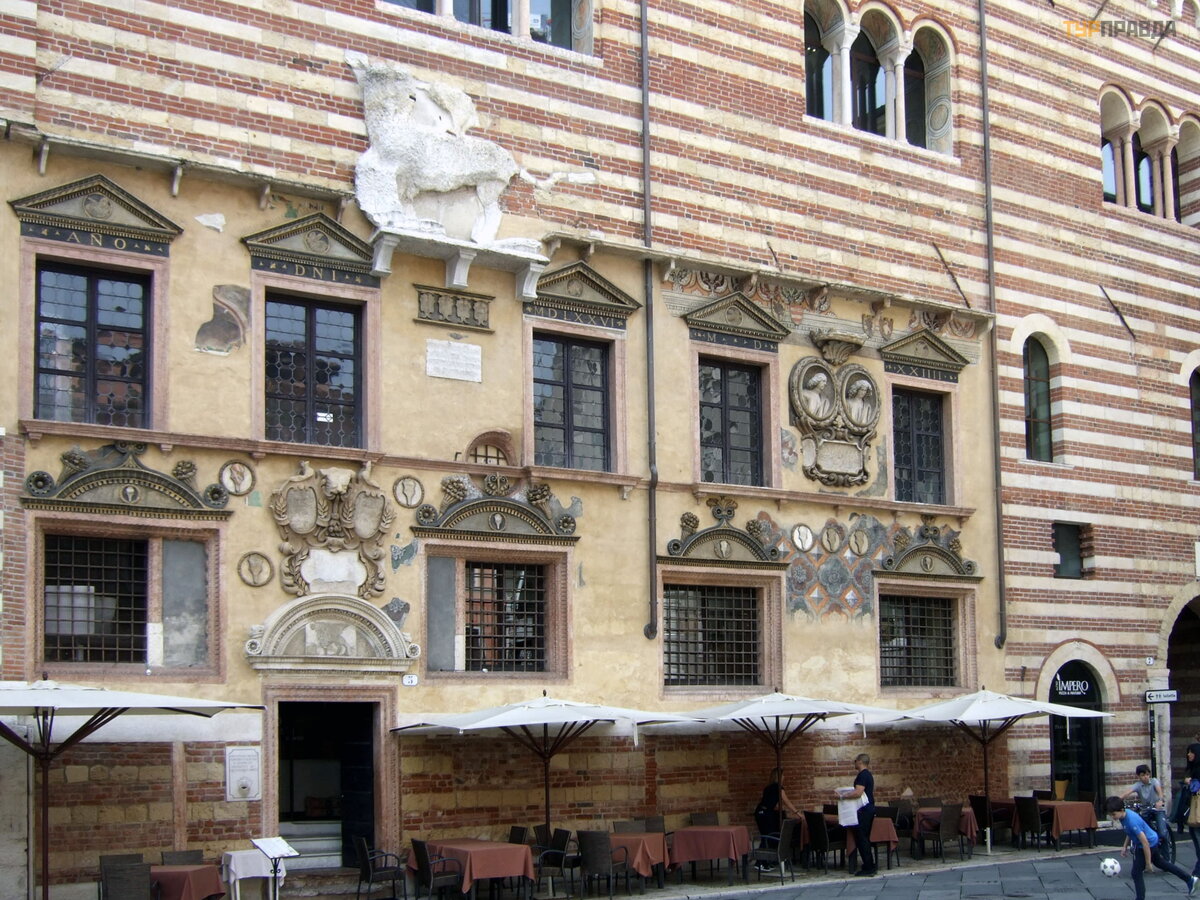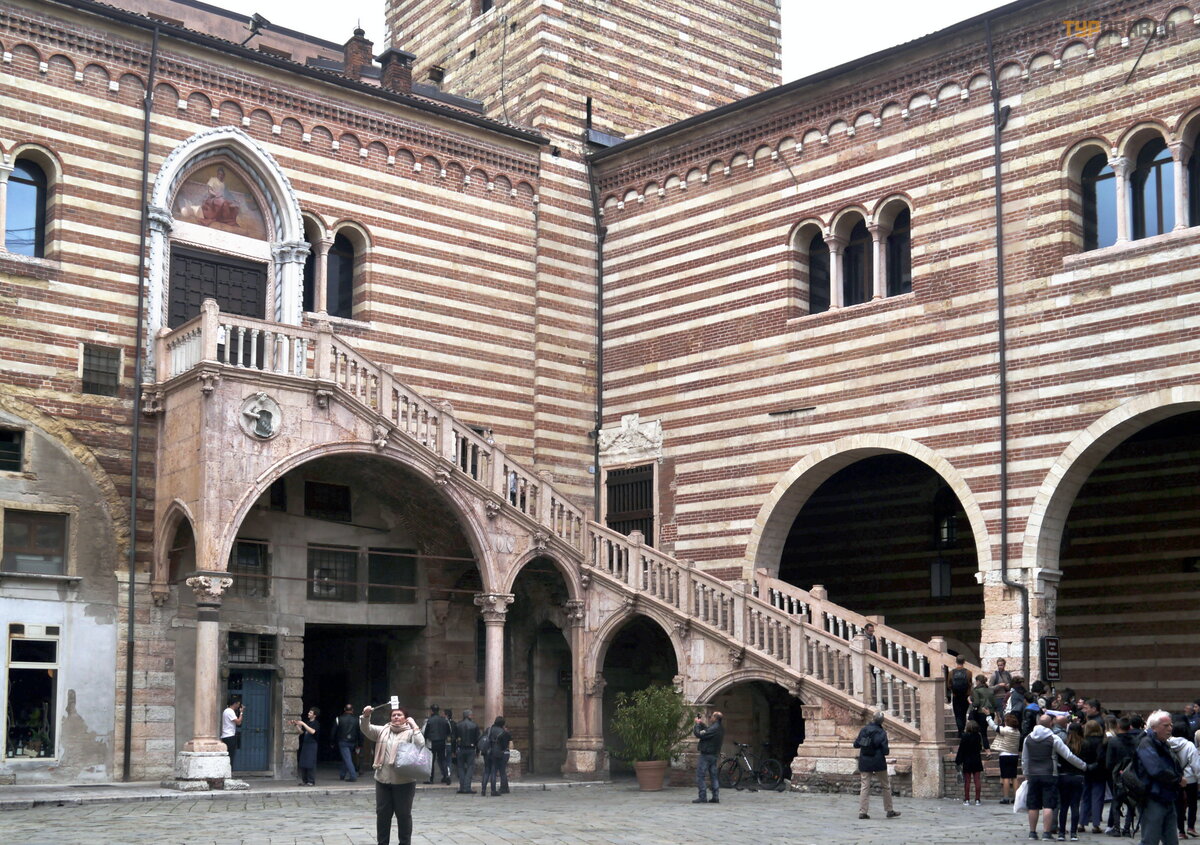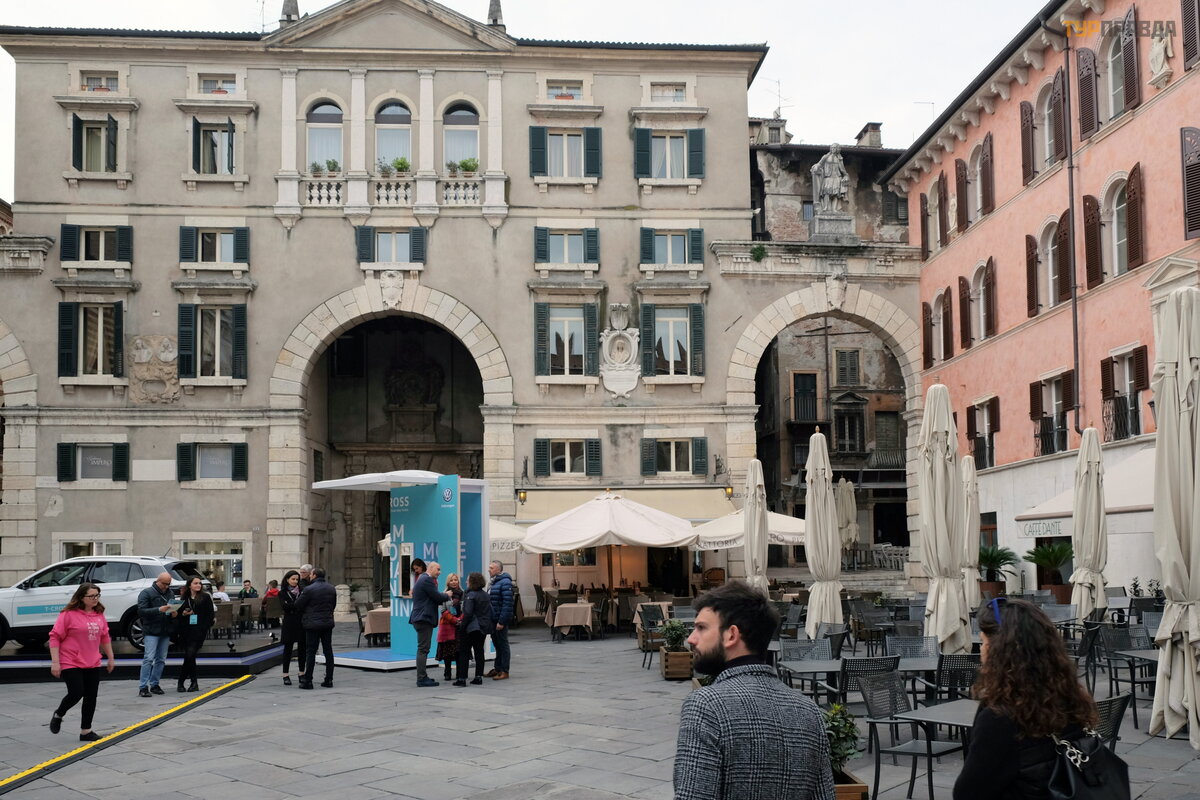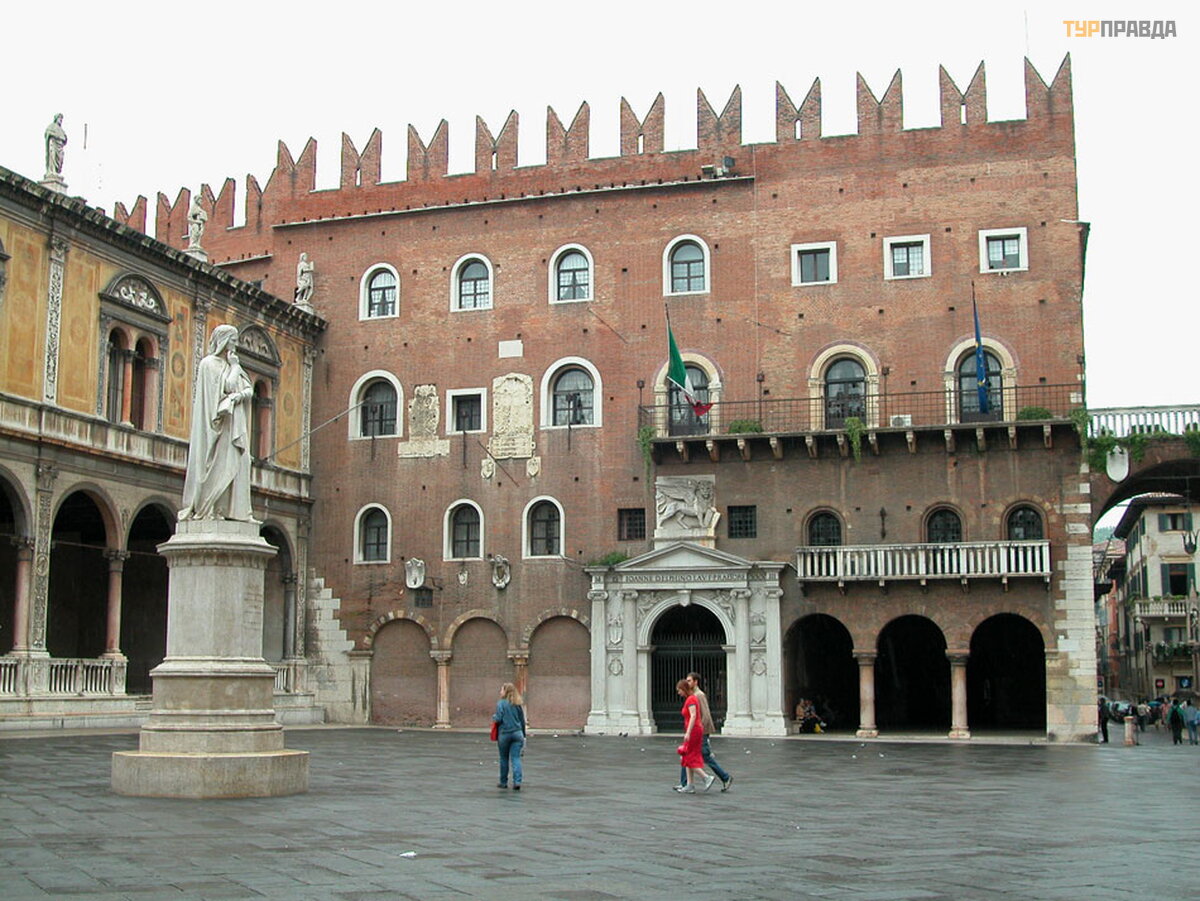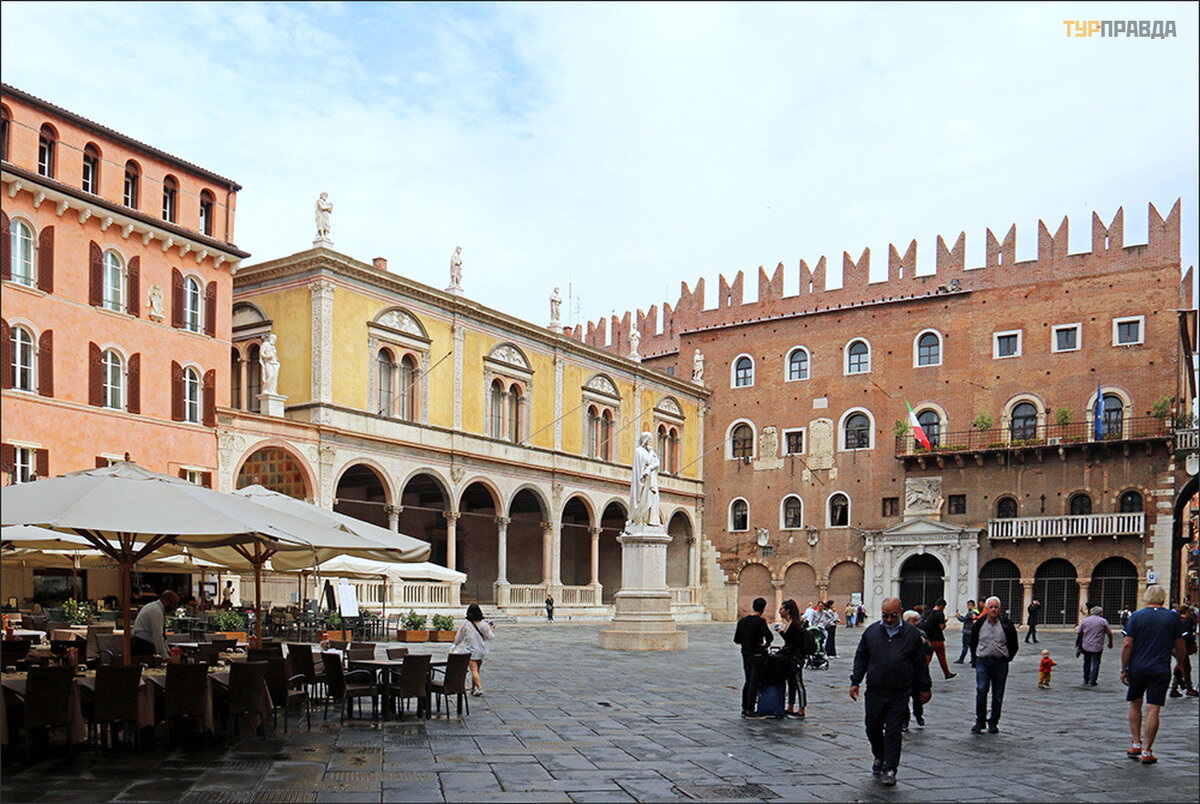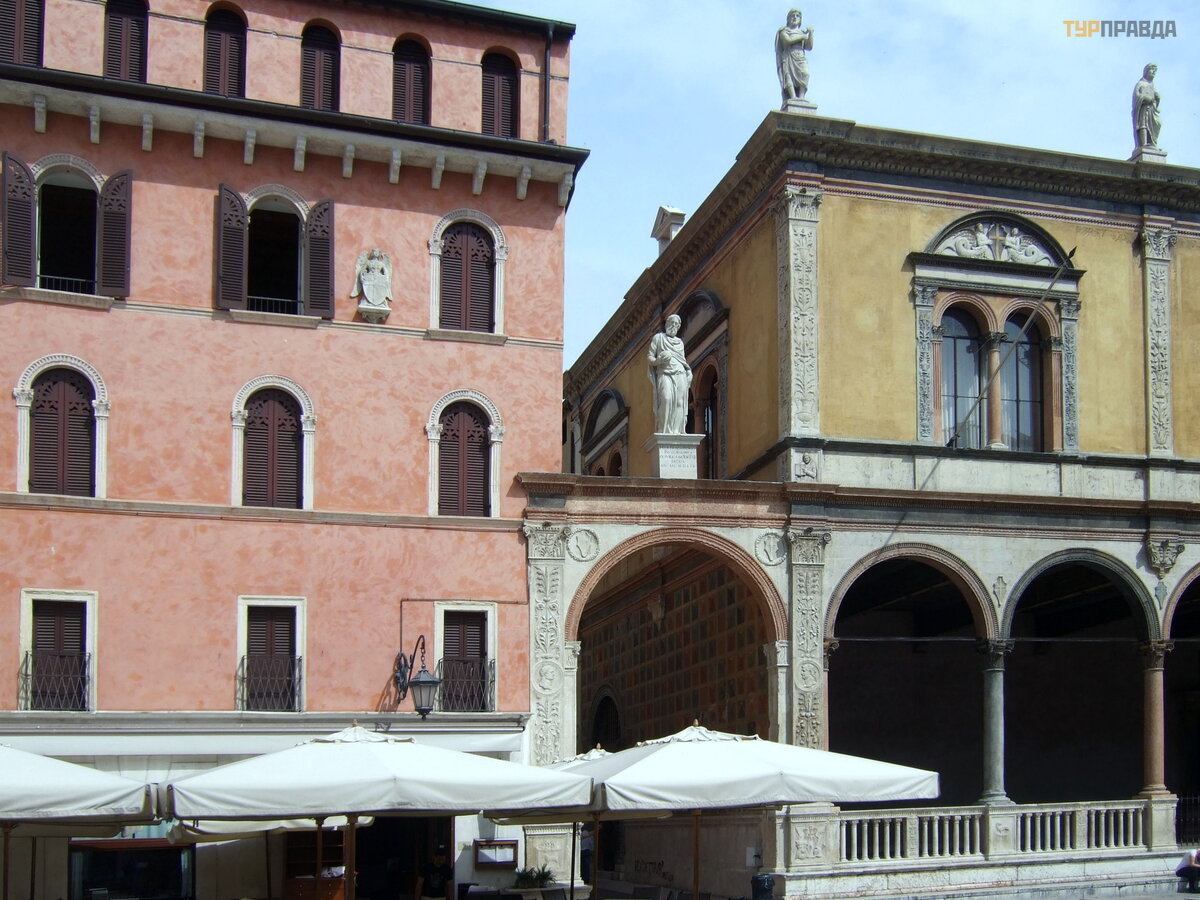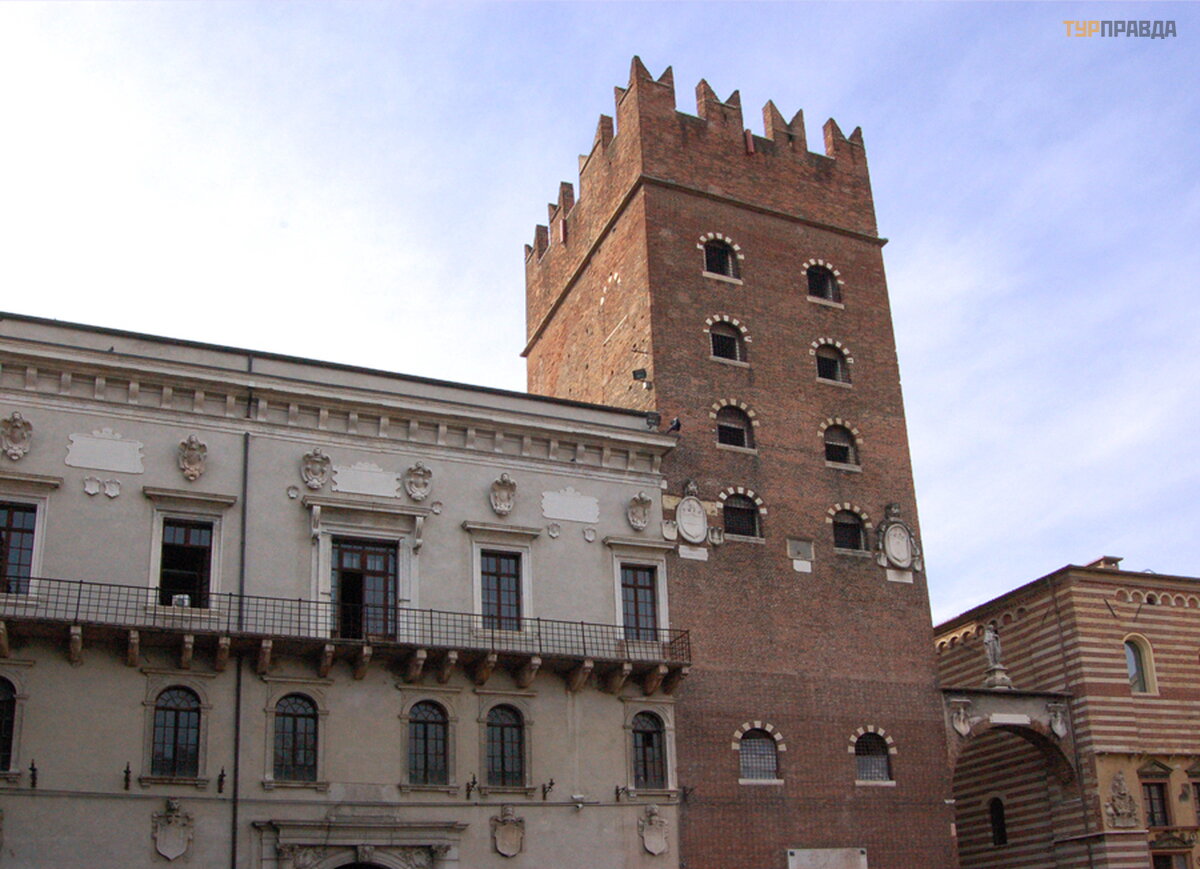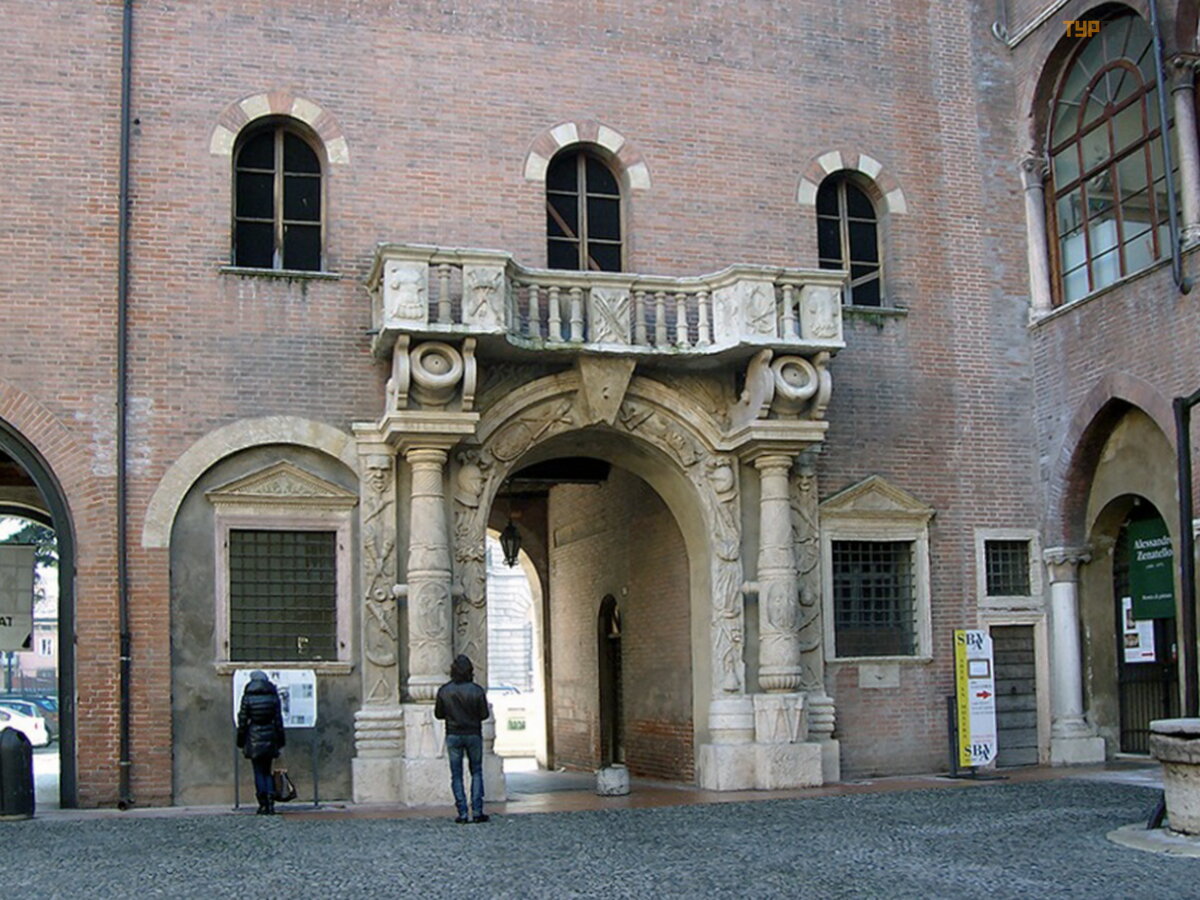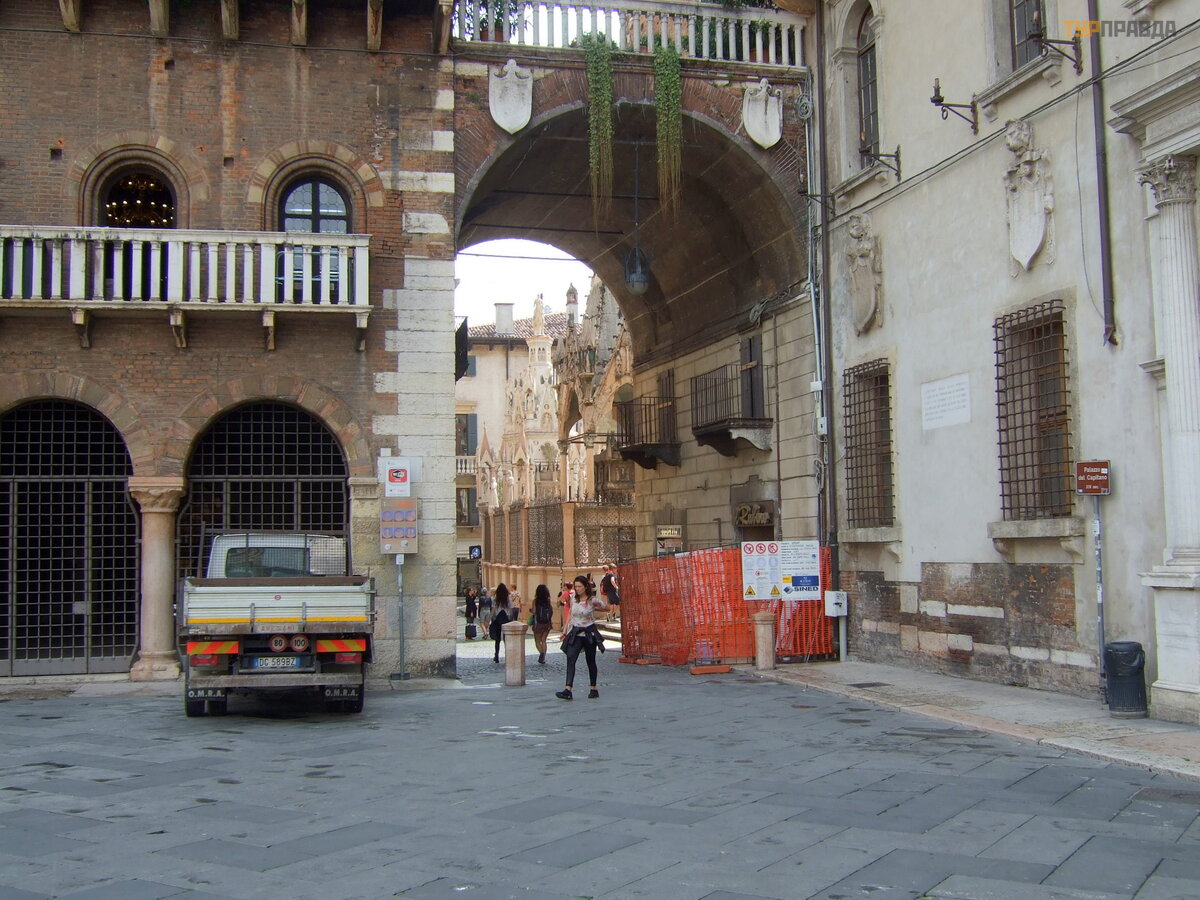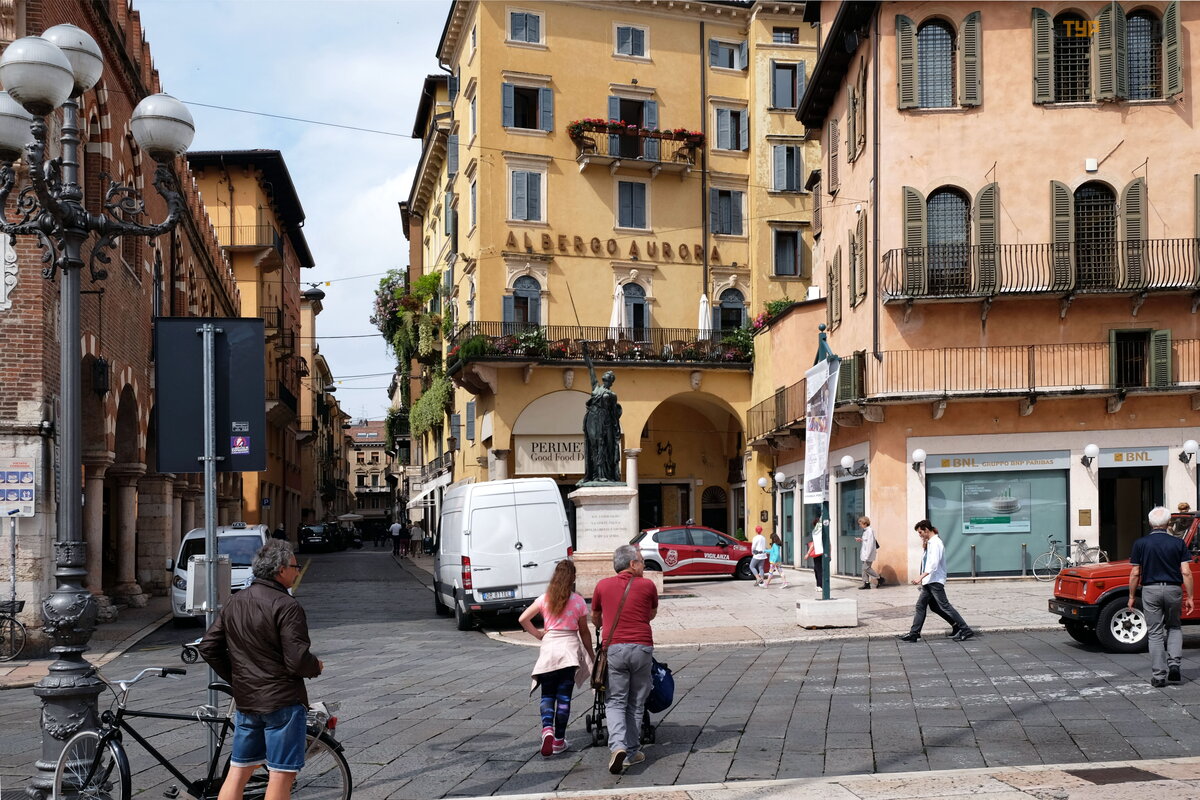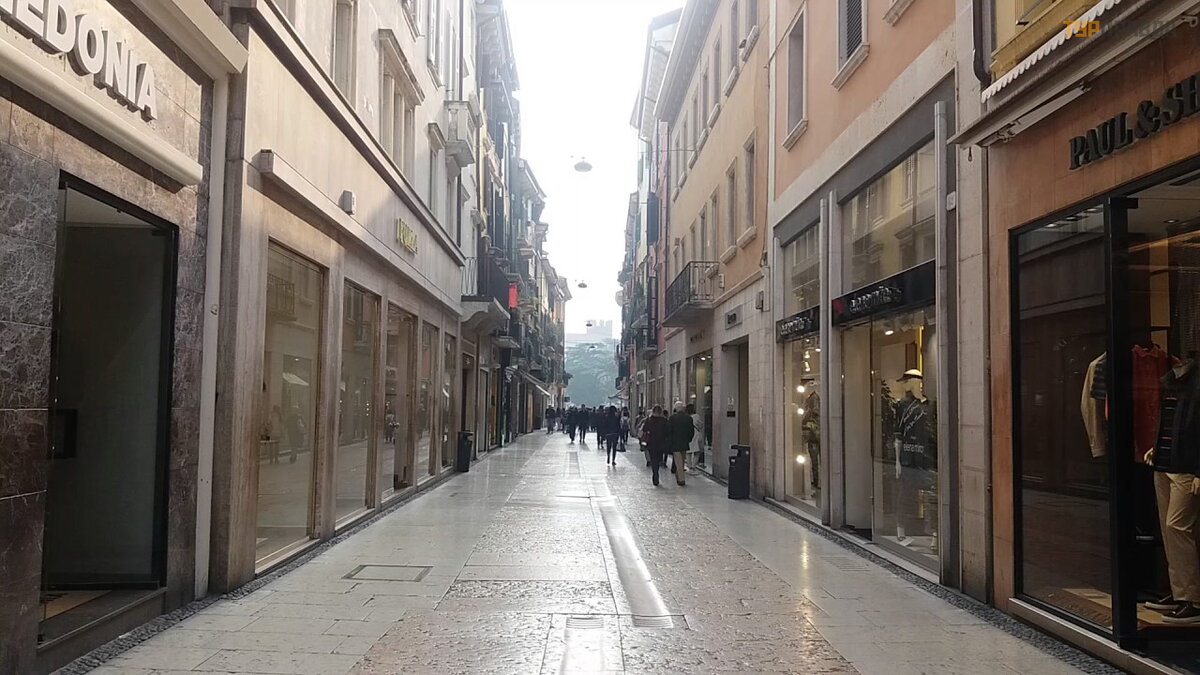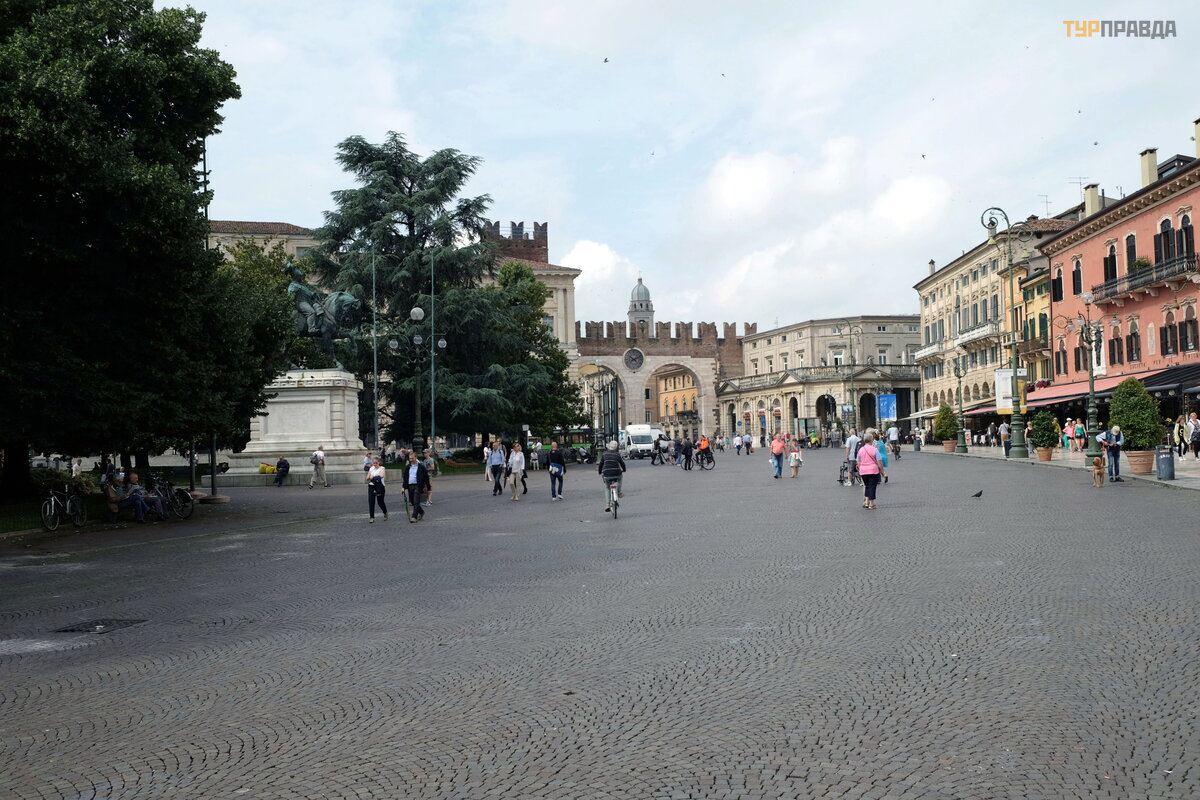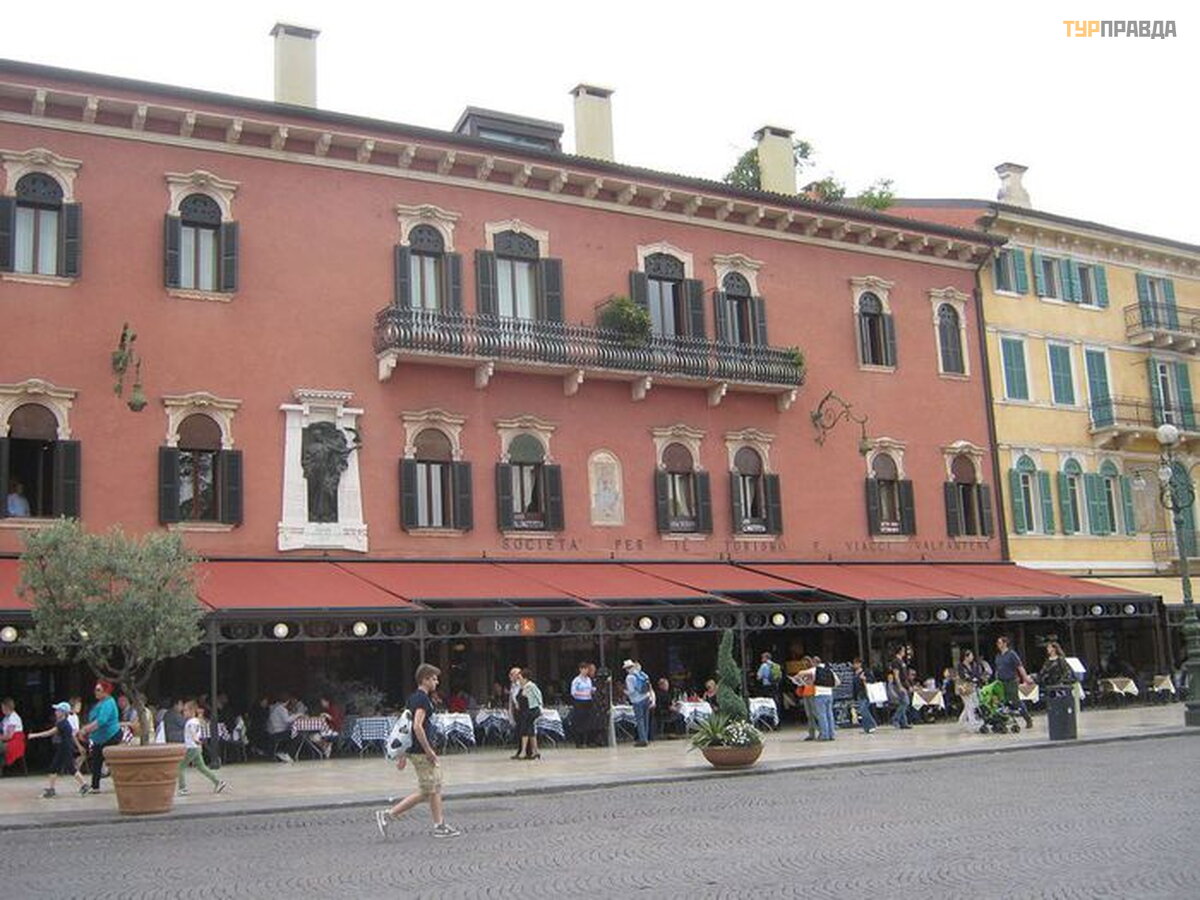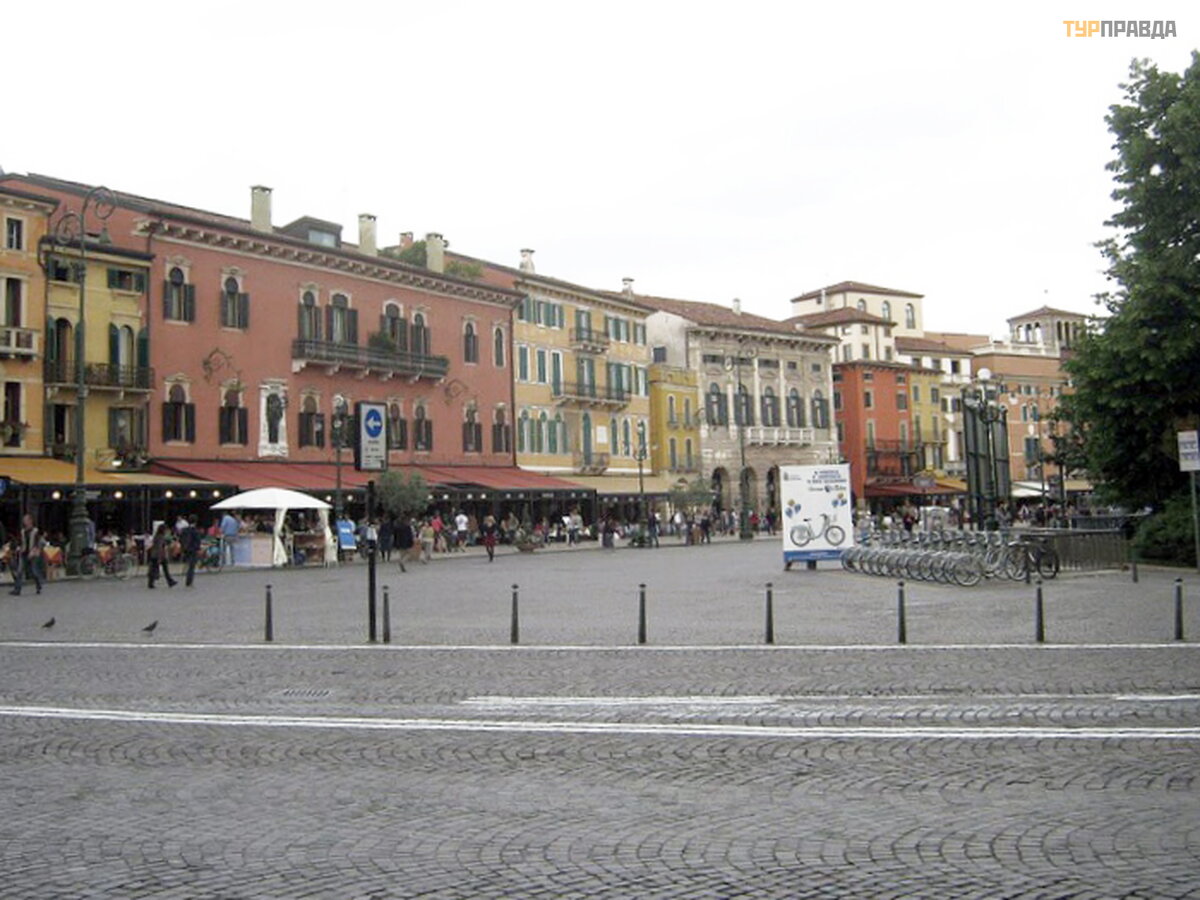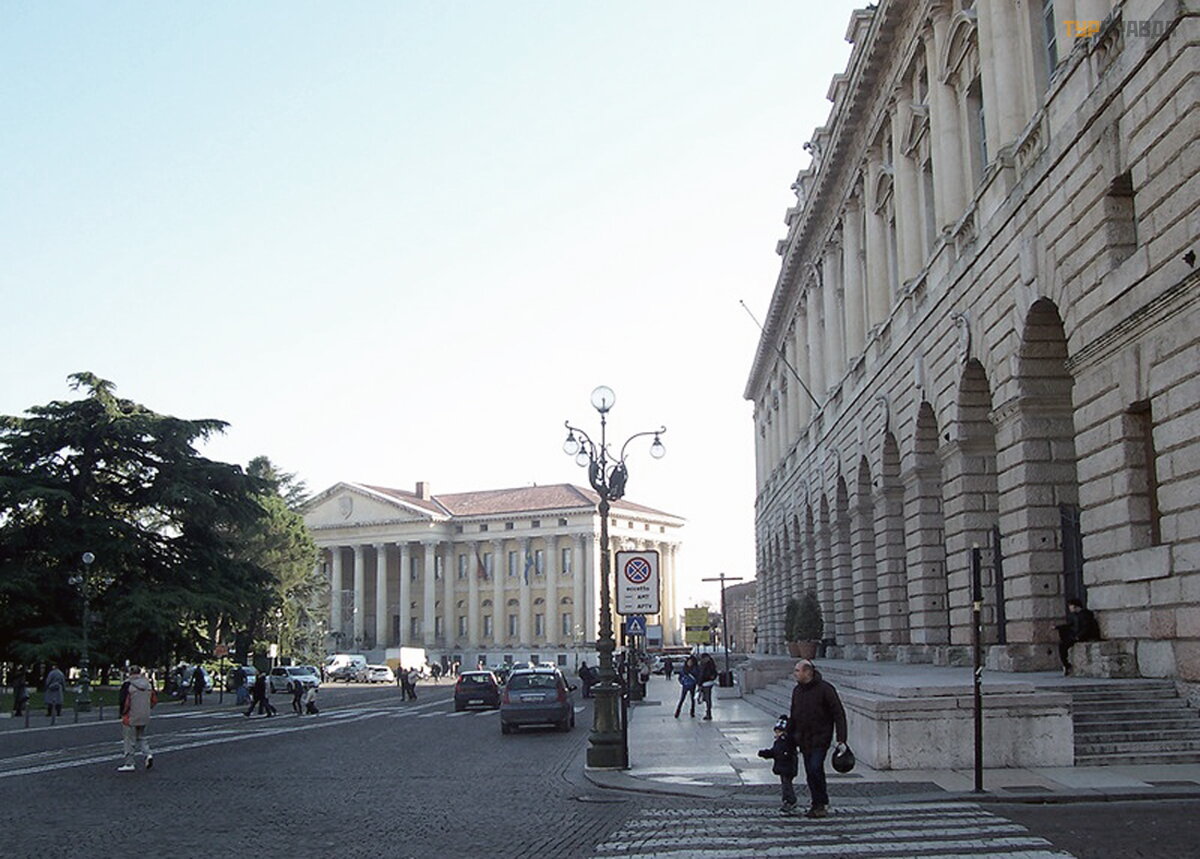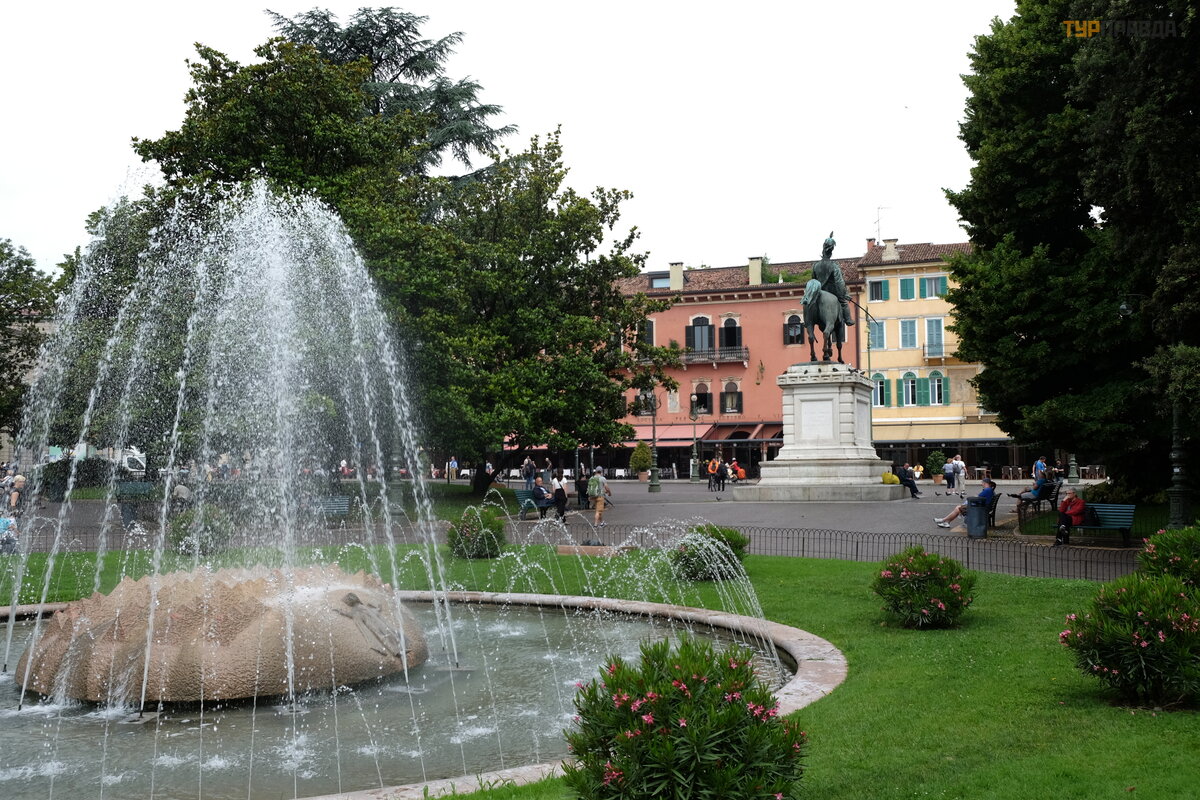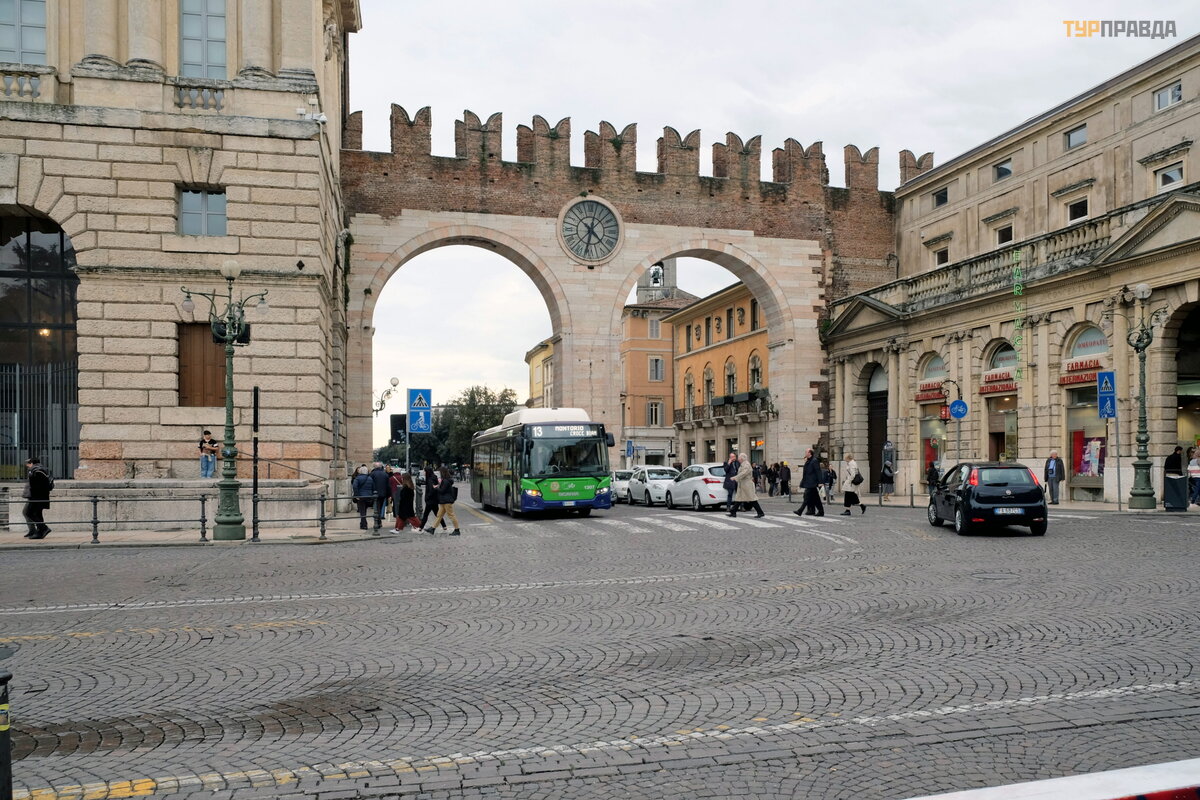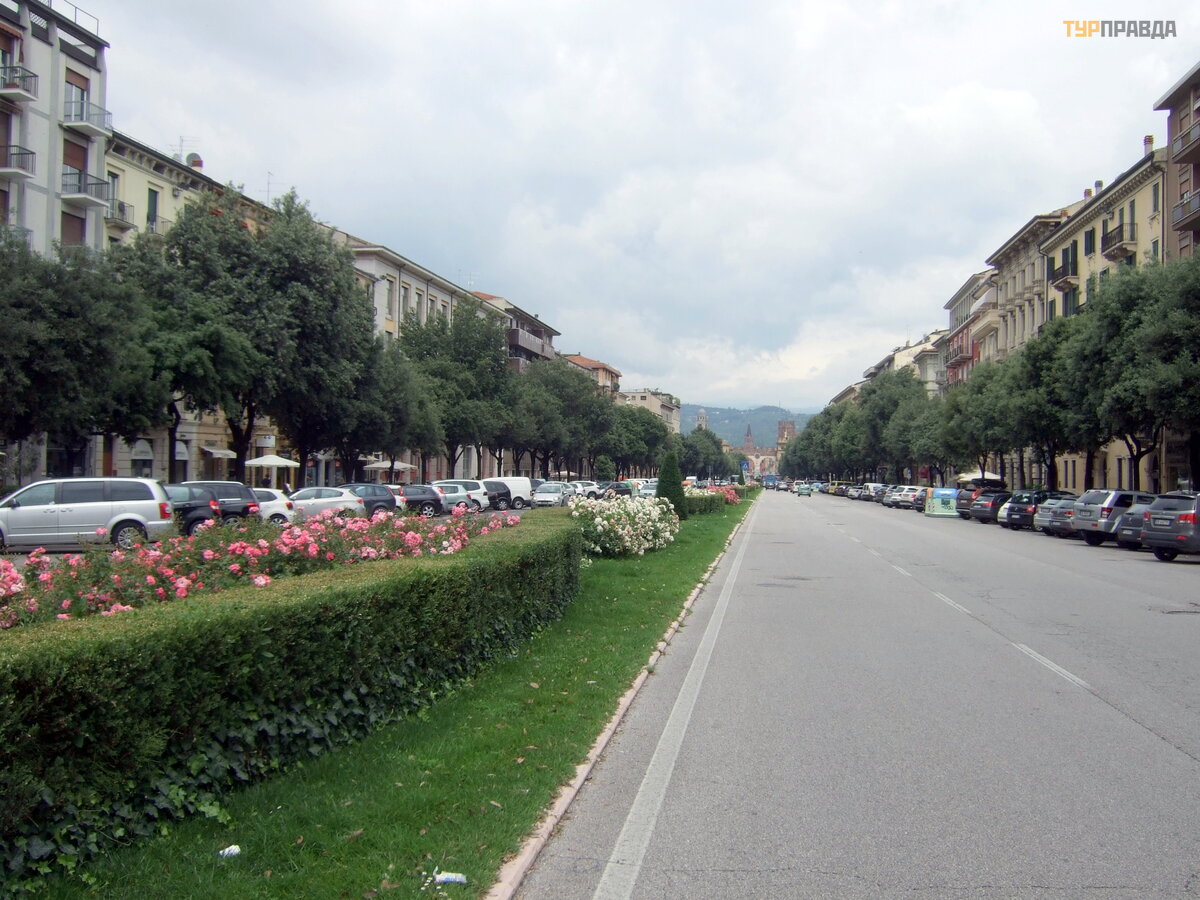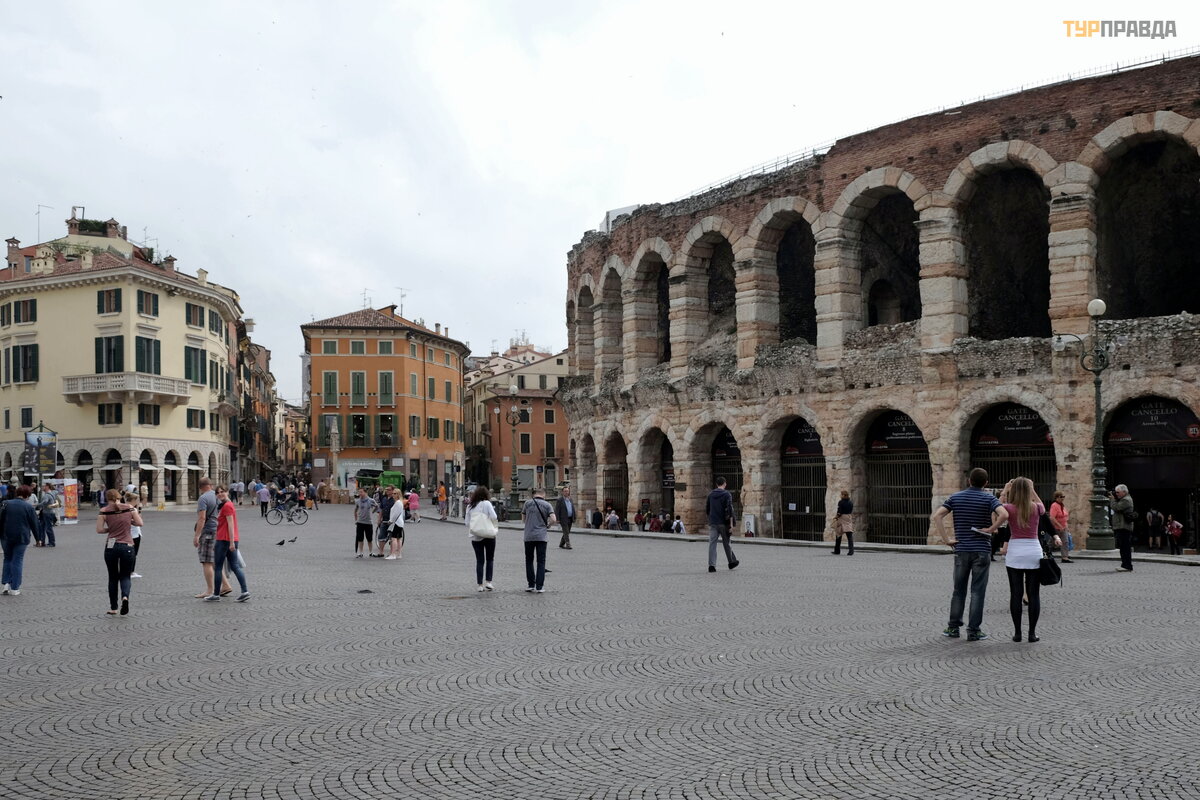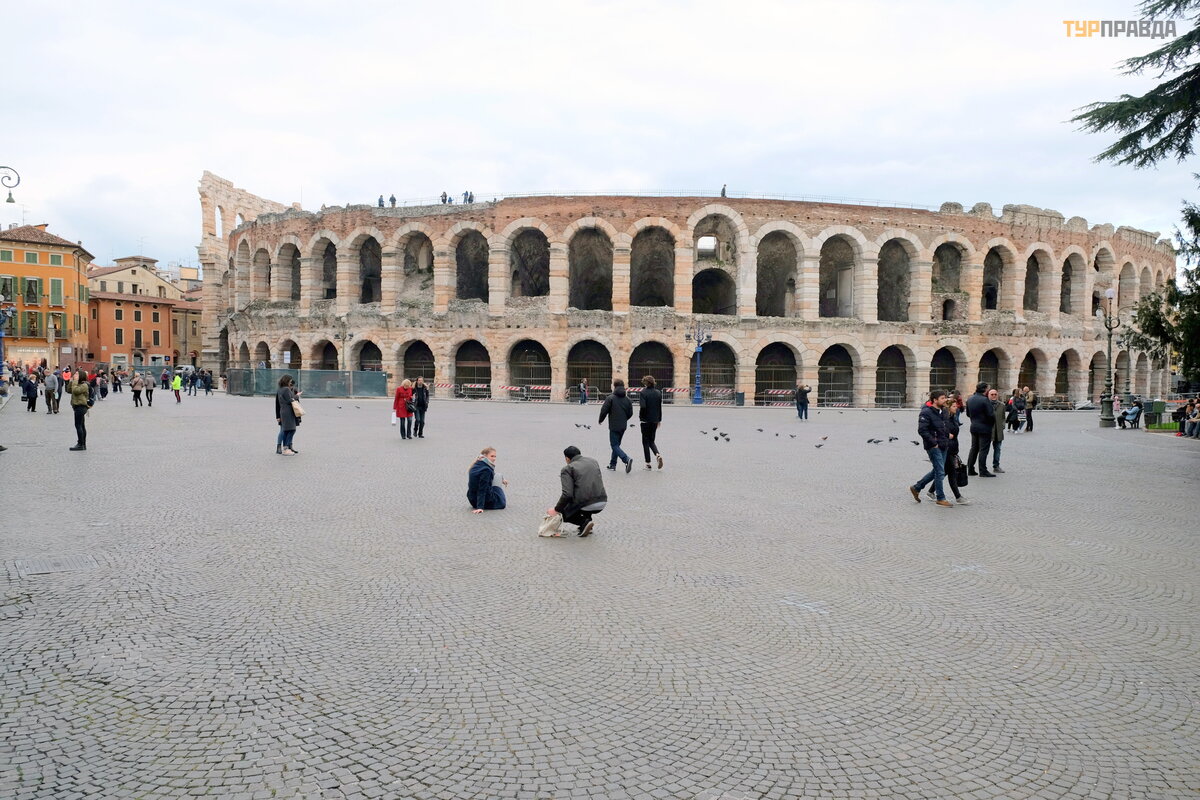Spring trip to Italy. Part 7. Verona (end)

A spring trip to Italy. Part 1. Trento >>>
A spring trip to Italy. Part 2. Mantova >>>
A spring trip to Italy. Part 3. Brescia >>>
A spring trip to Italy. Part 4. Treviso >>>
A spring trip to Italy. Part 5. Vicenza >>>
A spring trip to Italy. Part 6. Padua >>>
A spring trip to Italy. Part 7. Verona (beginning) >>>
A spring trip to Italy. Part 7. Verona (continued) >>>
In the evening we had a flight to Moscow, and in the morning we again went on the familiar path to the city. . .
. . . see the last planned cathedral, the largest temple of Verona - Basilica of Sant'Anastasia(Chiesa Santa Anastasia).
A Gothic building erected by the Dominicans on a site where a church probably already existed, with the same dedication, although a number of researchers believe that the Dominicans wanted to dedicate a new temple to St. Peter the Martyr, the Verona brother of San Zeno (both saints are patrons of the city).
The construction of the temple began in 1290 and continued until 1323, although its final stage came only in 1423-81.
The cathedral is clearly visible from the embankment of the Adige River:
Next to the entrance to the basilica, there is a hanging sarcophagus of Guglielmo di Castelbarco (1300), a famous feudal lord from the Adige valley and an ally of Scaligeri. This sarcophagus is considered the forerunner of the Veronese arches of the Scaligers.
No less majestic and the main facade of the church, despite the incompleteness of its upper part (there is not enough lining). The beautiful entrance portal with two doorways is decorated with bas-reliefs by Regino di Enrico on subjects from the New Testament, the lives of Saints Anastasia and Peter the Martyr and the history of the Dominican Order.
The majestic interior of the basilica is divided into three naves by twelve huge columns with Gothic capitals. . .
. . . supporting spacious vaults with floral ornaments.
The mosaic marble floor of the church was laid by Pietro da Porlezza in 1462 from white, pink and gray-blue marble.
The arch of the entrance portal of the basilica was lined with marble of the same colors.
The blessing bowls, sculpted, one at the beginning of the 16th century, the other in 1591, are of great interest. The bowls rest on two famous grotesque statues, nicknamed "the hunchbacks of St. Anastasia. "
The main altar of the basilica, decorated with frescoes of The Last Judgment (Turone, c. 1360) and The Annunciation (Michele Gilambono, mid-15th century).
In the main altar is the tomb of Cortesi Serego, created in 1492 by Nanni di Bartolo.
There are 17 chapels along the side walls and in the apse, which store a large number of magnificent works of sculptors and painters,
working in Verona and the province of Veneto.
The Pellegrini Chapel, inside there are 24 terracotta panels created in 1435 by Michele da Firenze depicting Christ and the saints.
On the outer arch of the chapel is the main masterpiece of the temple - a unique fresco "Saint George Delivering the Princess", painted by an artist from Verona, Antonio Pisano, better known as Pisanello.
Vincent Ferreri Chapel:
Altar of the Virgin Mary:
The Chapel of the Crucifixion belongs to the oldest part of the basilica, standing on the site of the former early Christian church dedicated to St. Anastasia.
Decorated with bas-reliefs from 1425.
Thomas Aquinas Chapel (1488–1502), altarpiece "Virgin Mary enthroned with Saints Thomas Aquinas and Augustine" by Girolamo dei Libri:
The Chapel del Rosario was dedicated to the memory of the victory at Lepanto over the Turks in 1571. Lorenzo Veneziano created the altarpiece "Madonna del Rosario with Saints Peter, Dominic and Donators":
Marble statues of Peter the Martyr, Saints Sebastian and Roch, and the Virgin Mary form the Altar of the Bolderi family.
The image of Mary Magdalene by Liberale da Verona of the late 15th century stands out in the altar of St. Rose of Lima.
The Miniscalchi altarpiece in the Chapel of the Holy Spirit is decorated with the 16th-century altarpiece "Pentecost" by Nicolò Giolfino and the "Descent of the Holy Spirit" fresco by Francesco Morone above it.
Altarpiece of the Fregoso family (1565) by Danese Cattaneo:
Leaving the cathedral. Side facade:
Next we went to the familiar places of Verona. Nearby are the famous Scaliger Arches.
The arches of Scaligeri, surrounded by an elegant wrought-iron lattice fence with heraldic motifs of the Della Scala family, are a family tomb. The complex, which looks like an ancient military camp, consists of several pointed aedicules,
on which statues of holy warriors are placed, guarding the eternal rest of the rulers. Two of the most majestic arches with canopies and rich sculptural decoration stand over the sarcophagi of Consignorio and Mastino II.
The third one is erected over the entrance to the church of Santa Maria Antica. There are other types of tombs here, in the classical form, sarcophagi, installed directly on the pavement inside the common barrier, but it is these three tombstones with high canopies that attract attention.
Slightly to one side is a 14th-century mansion revered by tourists as the "House of Romeo".
We didn't go to Juliet's House, once was enough,
but posting photos from past trips.
"The same Juliet's balcony":
Here she is:
Letters to Juliet:
Let's go to the very center of Verona. Piazza delle Erbe (Piazza delle Erbe) - The square of herbs, located where the Roman forum was in antiquity. Currently, a fruit and vegetable market is open here.
In the center of Piazza delle Erbe stands the Gothic masterpiece of the Scaligeri era, the Fountain of the Madonna of Verona(Fontana Madonna Verona), installed in 1368.
The aedicula in the center of the square, known as Berlina (Berlina), served in antiquity as a place of inauguration of the podestas, and later for entry into high positions of the magistracy. Many tourists mistakenly believe
that this place is something like a pillory.
There are many magnificent historical buildings around the square.
Palazzo Maffei(Palazzo Maffei), a massive baroque building of the 17th century. Above the attic of the palace there is a balustrade with statues of six ancient deities. In front of the house there is a marble column with a lion of St. 16th century stamp.
The strict silhouette of the brick Torre del Gardello (or Clock Tower), built in 1370, dominates the building. In 1626, an attic with Ghibelline battlements was erected over it.
One more building is very beautiful - Domus Mercatorum (House of Merchants). A building in the Gothic style, which served in the Middle Ages as the residence of professional corporations. A loggia on arches was added to the building in 1301 at the direction of Alberto della Scala,
and during the restoration of the building in the 19th century, Ghibelline battlements appeared on its roof.
Mazzanti's House (Case Mazzanti) - the facade of the building in the 16th century was frescoed with mythological scenes.
Palazzo Comunale (Palazzo della Comunale) faces with its different facades Piazza delle Erbe, Piazza dei Signori and the Courtyard of the Old Market. Facade facing Piazza delle Erbe.
The highest building of Verona rises above the palace - the Liberty Tower / Torre dei Lamberti (Torre dei Lamberti), which, despite its public importance as a city tower, in the name retains the memory of the one who built it in 1172 ancient Veronese family. Now there is an observation deck at the top of the Lamberti tower.
The uppermost tier of the tower, which includes a belfry, appeared already in 1464 - thus,
The tower reached its present height of 83 meters. From the very first years of its existence, this tower was also called the "Tower with Bells" after the belfry installed on it in 1294.
From Piazza Erbe we go to another square of ancient Verona - Piazza dei Signori/Piazza dei Signori (Piazza dei Signori). The square got its name due to the fact that there were buildings on it, which at different times housed the authorities and self-government bodies of the city.
To do this, you need to go through the Arco della Costa (Arco della Costa), to which a whale rib is suspended.
We pass one more arch along "Rebra Street" or Via Della Costa, and we get to Piazza della Signoria:
One of the facades Palazzo Comunale (Palazzo della Comunale) overlooks the square - one that belongs to the Renaissance. Palace of the Commune,
or the Palace of Justice (Palazzo del Comune or Palazzo della Ragione), built at the beginning of the 12th century from light tuff and red brick characteristic of Verona.
During the Venetian rule, the palace housed the city government, courts, a prison and various institutions, including a notary college.
From the square you can walk into the elegant courtyard of the Palazzo Comunale, known as the Courtyard of the Old Market, in which the gothic Stairway of the Reason/Scala della Ragione is still preserved (Scalla della Regione), which leads to the museum, the Gallery of Modern Art.
Palazzo della Prefettura originally served as the residence of the Scaligeri royal family. If its construction began in the 12th century, then it acquired its final form only by the 16th century. In the following centuries the palace was destroyed,
but in the first decades of the 20th century it was carefully restored, preserving as far as possible the original structures.
Podesta Palace - a brick building with Ghibelline battlements at the top, was built at the direction of Alberto della Scala on the site of former Roman ruins, and then became the residence of the most powerful of the Scaligers - Cangrande I, here he invited Dante who lived in the palace for 13 years.
Inside the halls were decorated with frescoes by Giotto, which, unfortunately, have not been preserved.
In the foreground is the monument to Dante Alighieri, sculpted in 1865 by the sculptor Ugo Zannoni in memory of the stay in the city of the great poet, who was a guest of the Della Scala family. Dante spent 13 years of his exile in Verona, from 1303 to 1316.
Practically all the buildings on the square are connected to each other by graceful arches, one of which adjoins the Loggia of the Soviets. The yellow building - the palace Palazzo del Consiglio(Palazzo del Consiglio), orLoggia of the Sovietswas erected between 1475 and 1492. More commonly known as the Loggia di Fra Giocondo, this structure is one of the finest and most elaborate examples of Veronese architecture.
Next to the Loggia of the Soviets, there is a pink building, a former exchange office, connected to the former Palace of Judges by an arch, on which a sculpture of the Marquis Scipione Maffei, an Italian writer who fought to renew the social life and culture of his native city, Verona, is installed.
Palace Cansignorio (Palazzo di Cansignorio),
or The Palace of the Captains (Palazzo del Capitanio) was built by order of the ruler of Verona from the Scaliger family Cansignorio della Scala in 1363 and was originally a fortress with four corner towers and a fortress wall surrounding the courtyard. During the reign of Venice, the Cansignorio Palace was chosen as the residence of the Venetian captains who ruled the city, thanks to which it received its middle name. Since the 16th century, it has been rebuilt several times, eventually retaining only one of its fortress towers.
The inner courtyard can be accessed through the Porta Bombardiera gate, erected in 1687. The gates owe their characteristic name to the sculptural depiction of military symbols.
And through this arch you can go to the Arches of the Scaligers:
Leaving the city center. We go towards the Arena de Verona. The small square of the 14th century Novembre, where there is a monument to the herts of 1915, when an Austrian airplane bombarded the historic city center, hitting many civilians in the market.
We walk along the Via Giuseppe Mazzini shopping street - these are 270 meters of beige-pink marble slabs. In the middle is a groove for rainwater runoff.
Bra Square is located on the southwestern side of the Arena, where various concerts and performances are held today. The name of the square is an abbreviation of the Lombard word braida, which means "big" in translation.
Facades of magnificent mansions, patrician palaces and public buildings:
Stand out Palazzo della Gran Guardia (Palazzo della Gran Guardia) - on the right in the photo, and Phiharmonic Theater (Teatro Filarmonico) - in the center of the photo:
Not far from Piazza Bra stands a monument to the great architect of Verona, Michele Sanmichele.
In the green square, laid out in the center of the square, there are Fountain of the Alps, equestrian monument to Victor Emmanuel II (1883).
The 15th century Portoni della Bra marble gate separates the square from Corso Porto Nuova. with two serrated arches. They were not conceived as city gates and were part of the fortress walls built during the reign of Duke Gian Visconti at the end of the 14th century. It is often a gathering place for tourist groups.
According to Corso Nuovo, you can reach the train station in a straight line.
The central place is occupied by the majestic Amphitheater Arena (Arena) - the main, best preserved ancient Roman monument of the 1st century AD. e. The third largest in the world, after the Roman Colosseum and the amphitheater in Santa Maria Capua Vetere, the Arena of Verona is especially interesting due to its excellent preservation. Today, the opera performances at the Arena of Verona, now given annually, have become a cultural event of world significance, and local musical seasons attract more than half a million spectators annually.
The unique Liston Sidewalk is located on the west side of Bra Square. It began to be laid on Bra Square in 1770 from marble slabs brought from neighboring quarries. This is a favorite place for walks of the Veronians. The pavement is paved with unusual marble slabs.
On them you can see the fossilized ancient mollusks of the Jurassic period. These shells are 175 million years old, a real geological landmark.
This concludes our spring trip to Italy.
It's a pity that now there is such a problem in Italy with the coronavirus, and it is not known when it will be possible to visit this beautiful country again.
